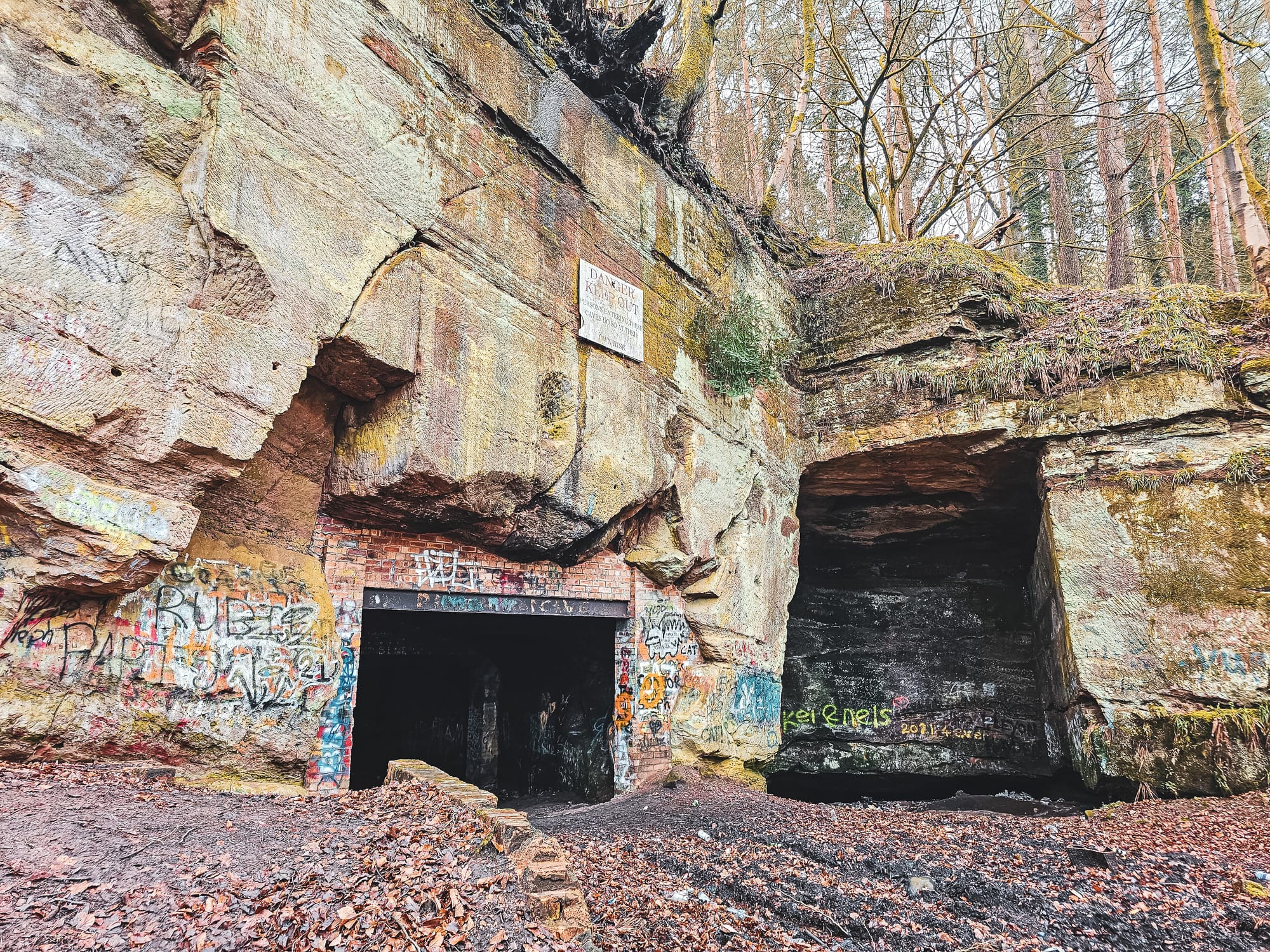In the Triassic period, a vast expanse of time stretching from around 252 to 201 million years ago, the landscape that would eventually become the area around the Beech Caves began to take shape. During this era, the climate was markedly different from today, characterized by its dryness, which played a crucial role in the formation of the red Keuper Sandstone. This particular type of sandstone is notable for its distinctive colour and composition, resulting from the accumulation and compaction of mineral and organic sediments over millions of years.
Watch my video on Beech Caves on YouTube
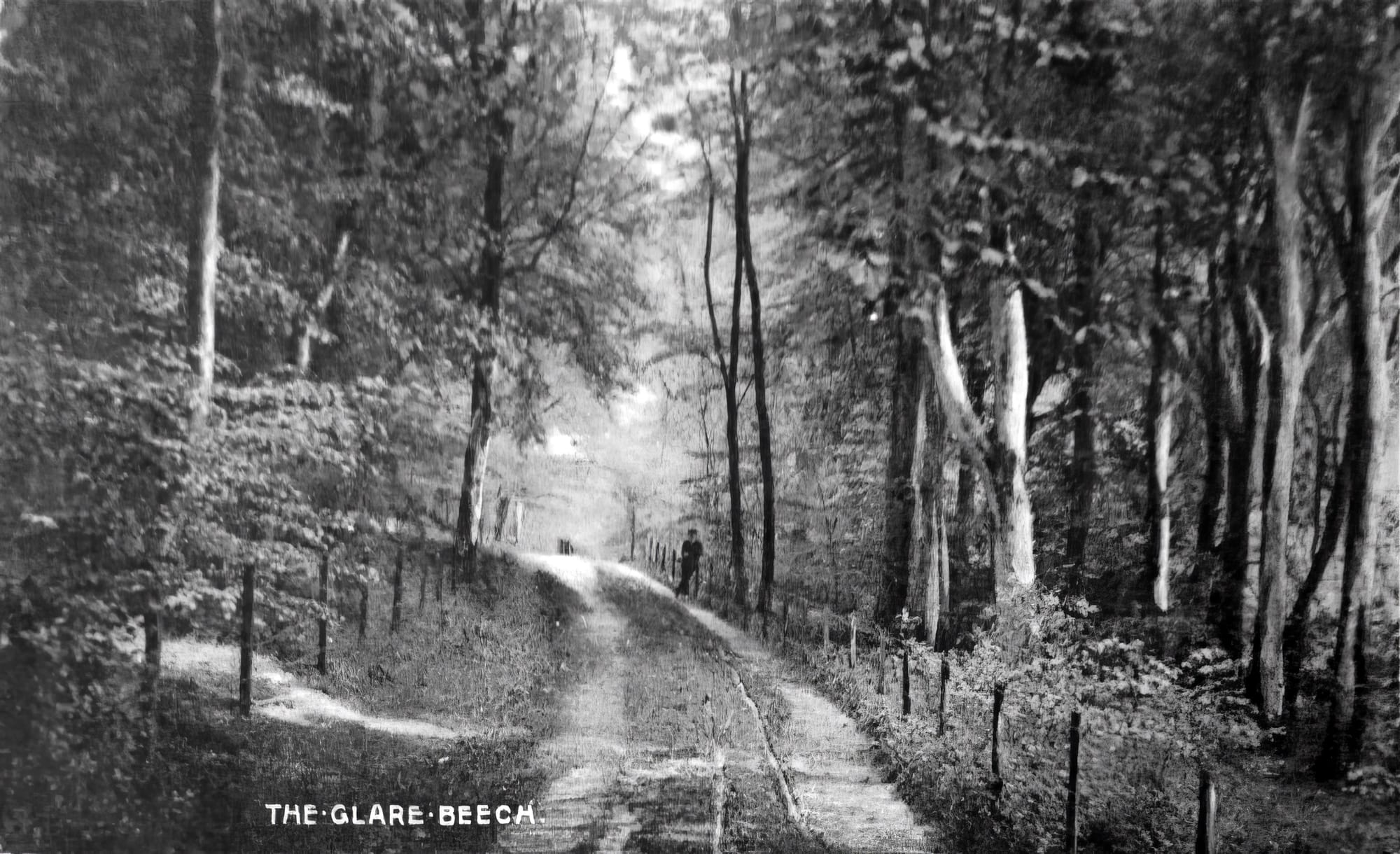
As the ages passed, human interaction with this natural landscape began to leave its mark. The method known as pillar and stall workings was employed to extract the valuable red Keuper Sandstone for building purposes. This ancient technique allowed for the stone to be removed efficiently without the need to clear the overlaying surface material or overburden. Miners would leave columns of stone—pillars—intact to support the roof of the cave while extracting the surrounding stone. This method created spaces within the sandstone that formed the caves we see today. This is the same as the mine at Kent Hill’s Quarry in Audley.
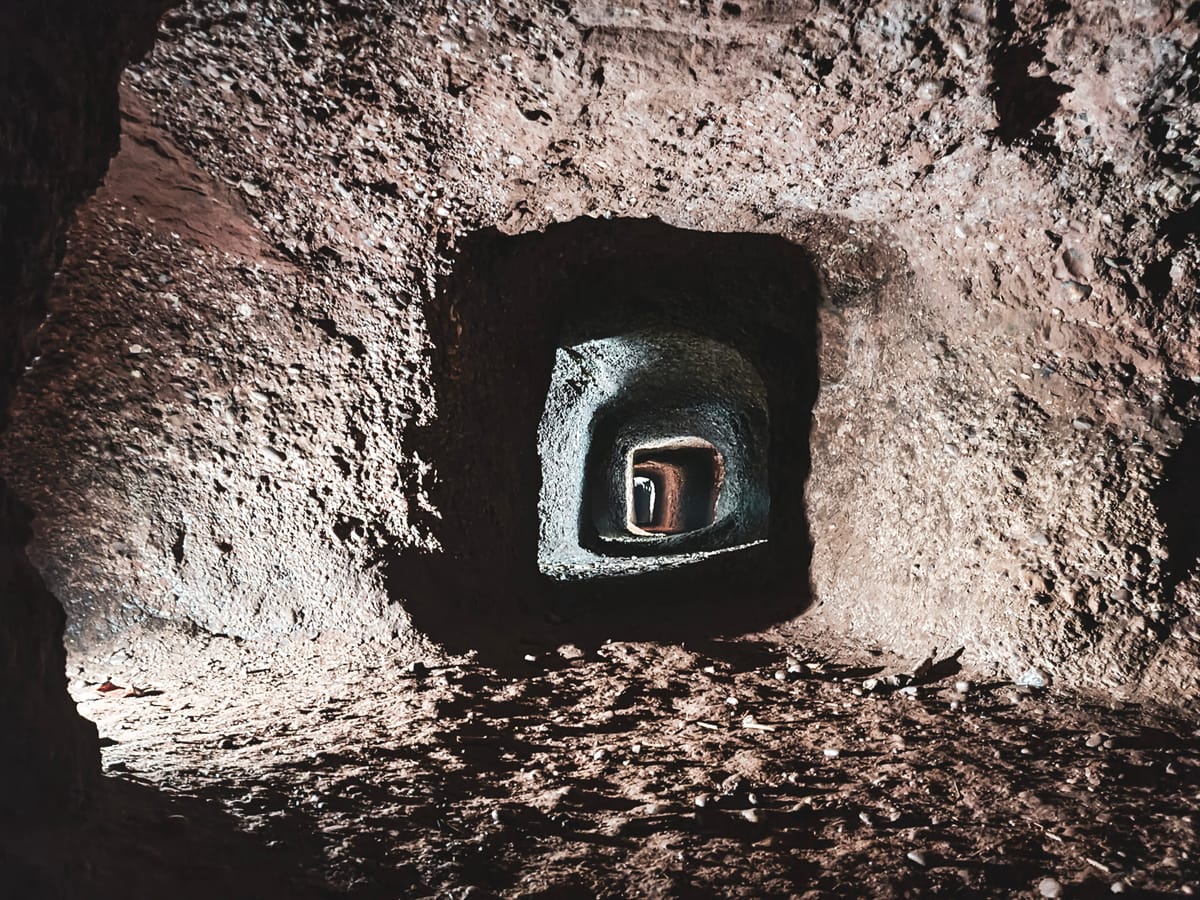
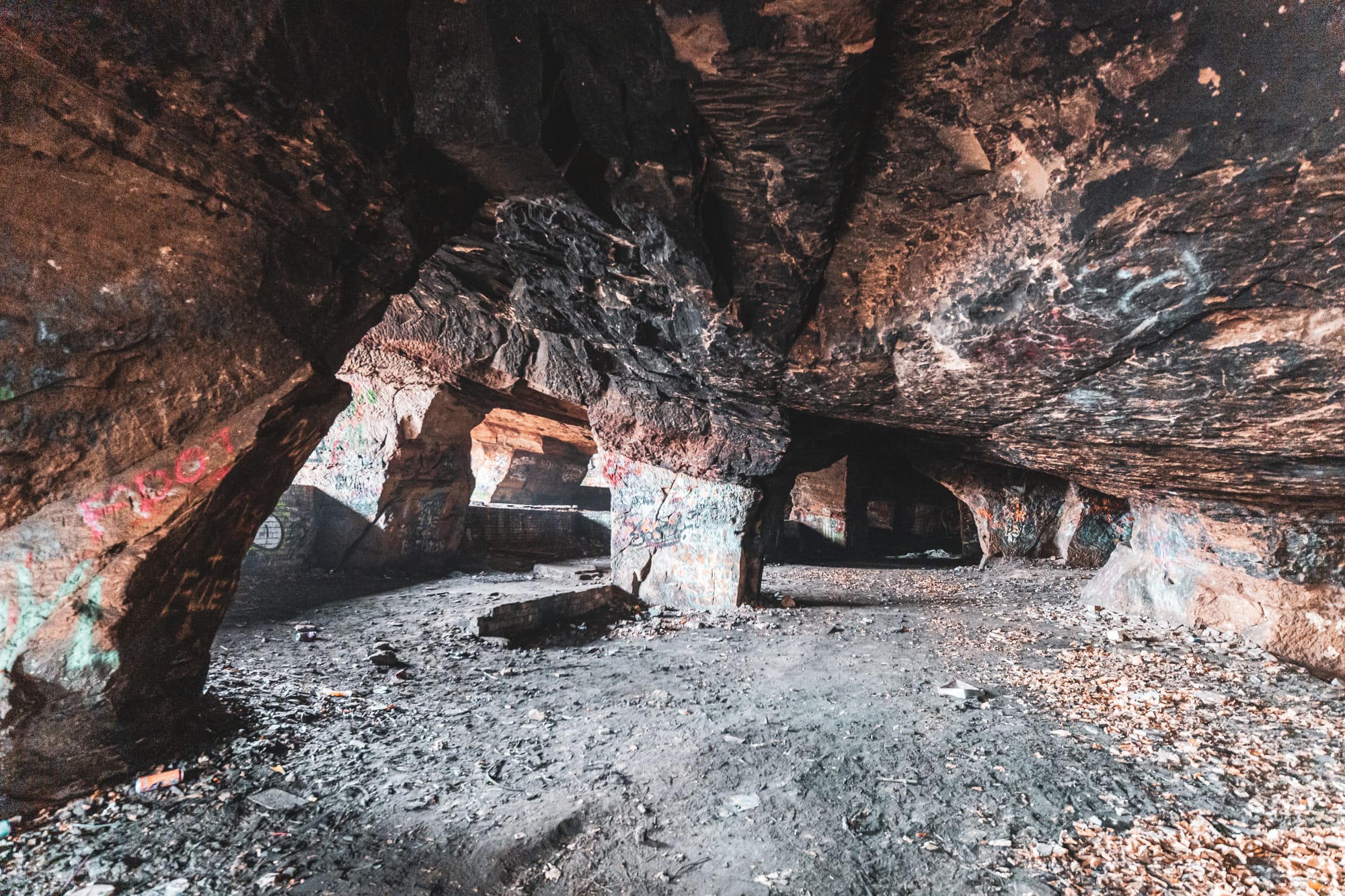
The caves, with their floors set across five different tiers ranging from 0.5 to 6 meters in height, bear little evidence of explosive use. Explosives were likely avoided to preserve the structural integrity of the pillars, which were crucial for preventing collapses. This careful, methodical approach to quarrying reflects a deep understanding of the material and the geological conditions, ensuring that the caves remained stable and usable over centuries. The holes and hollows in the stone were probably for supporting wooden scaffolding.
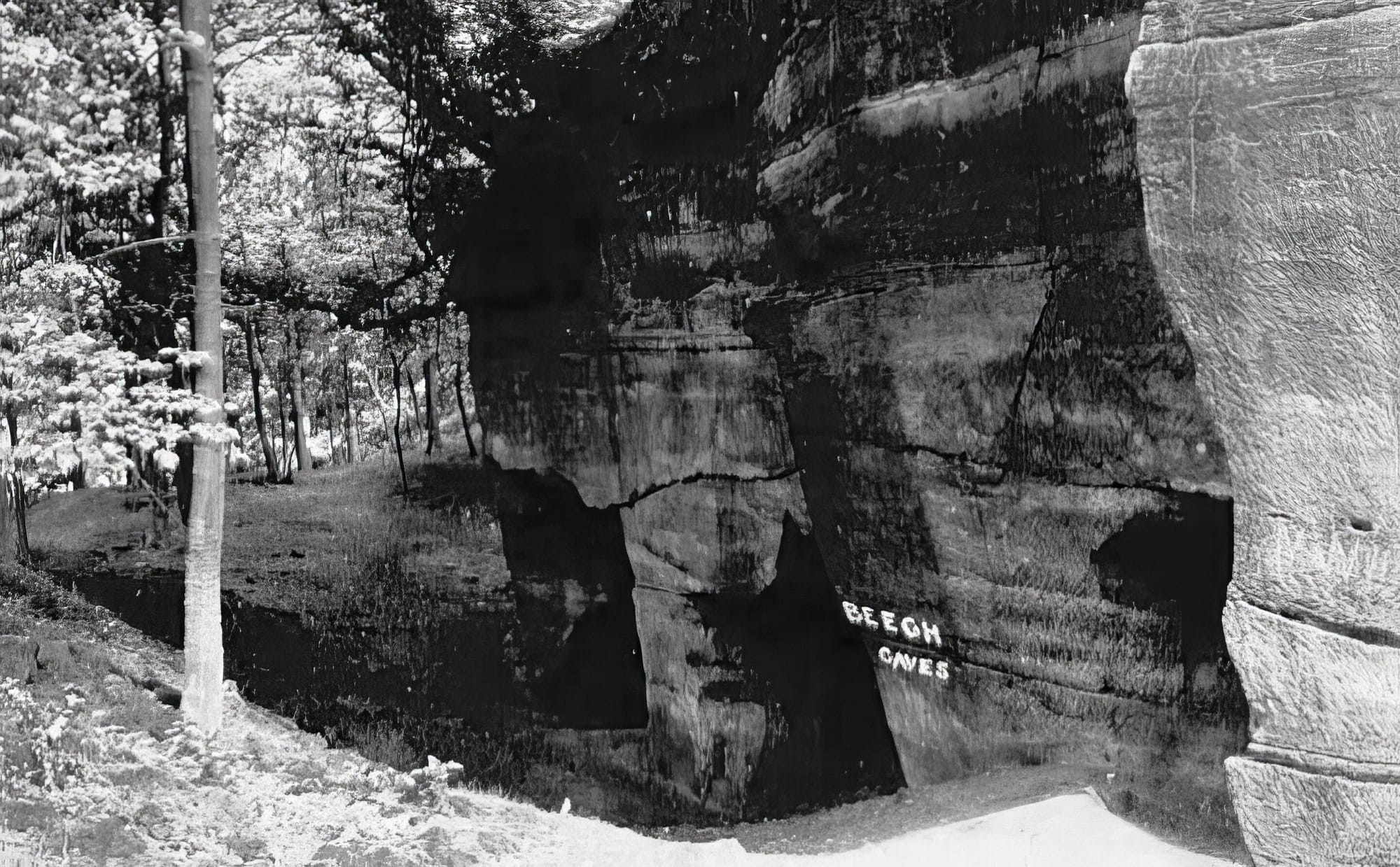
In 1633, a notable transaction took place that highlighted the importance of the Beech Dale area for local construction. On August 31 of that year, records show that Roger Low was paid to quarry stone from the site. This stone was specifically intended to construct the new Trentham Hall, designed in the Elizabethan style by Richard Leveson, who was an important Elizabethan Navy officer and MP. This new hall was to replace the original one built in 1599 on the ruins of a priory. The cost of this hall was £6000, which in 2024 is around £1.1 million.

The New House at Trentham, 1630-1639Trentham Hall was passed down through generations of the Leveson family to Sir Richard Leveson (1598-1661) who built a new house at Trentham in 1630. Work on this new property took just under nine years ...View Full Resource on Sutherland Index
This event is significant for a few reasons. First, it shows that the Beech Caves, part of the Beech Dale quarry, were recognized as a valuable resource for building materials as early as the 17th century. The decision to use red Keuper Sandstone from this area for Trentham Hall underscores its importance. This stone wasn't just chosen for any construction; it was selected for a grand project, reflecting its quality and the aesthetic demands of the time.
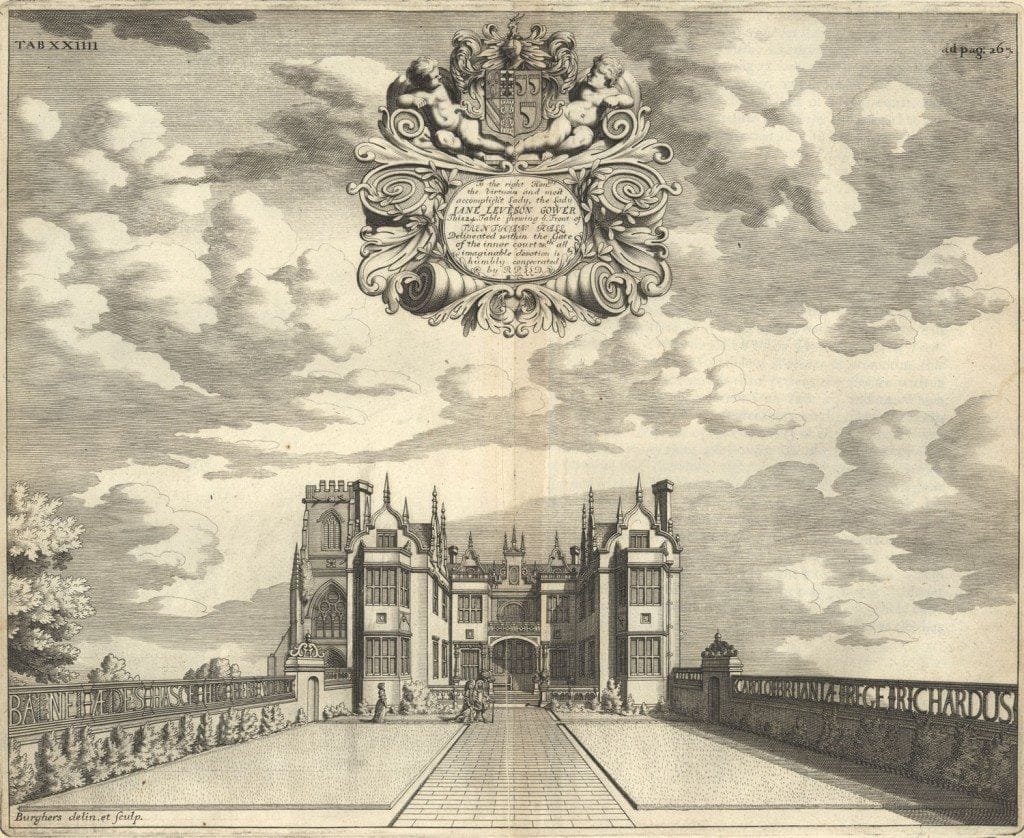
The use of local stone for such a prestigious project as Trentham Hall also tells us about the practices of the period. It demonstrates a preference for utilizing nearby resources, which was likely both practical and economical. Moreover, this specific instance of quarrying for Trentham Hall connects the natural geological features of the region directly to its architectural and cultural history.
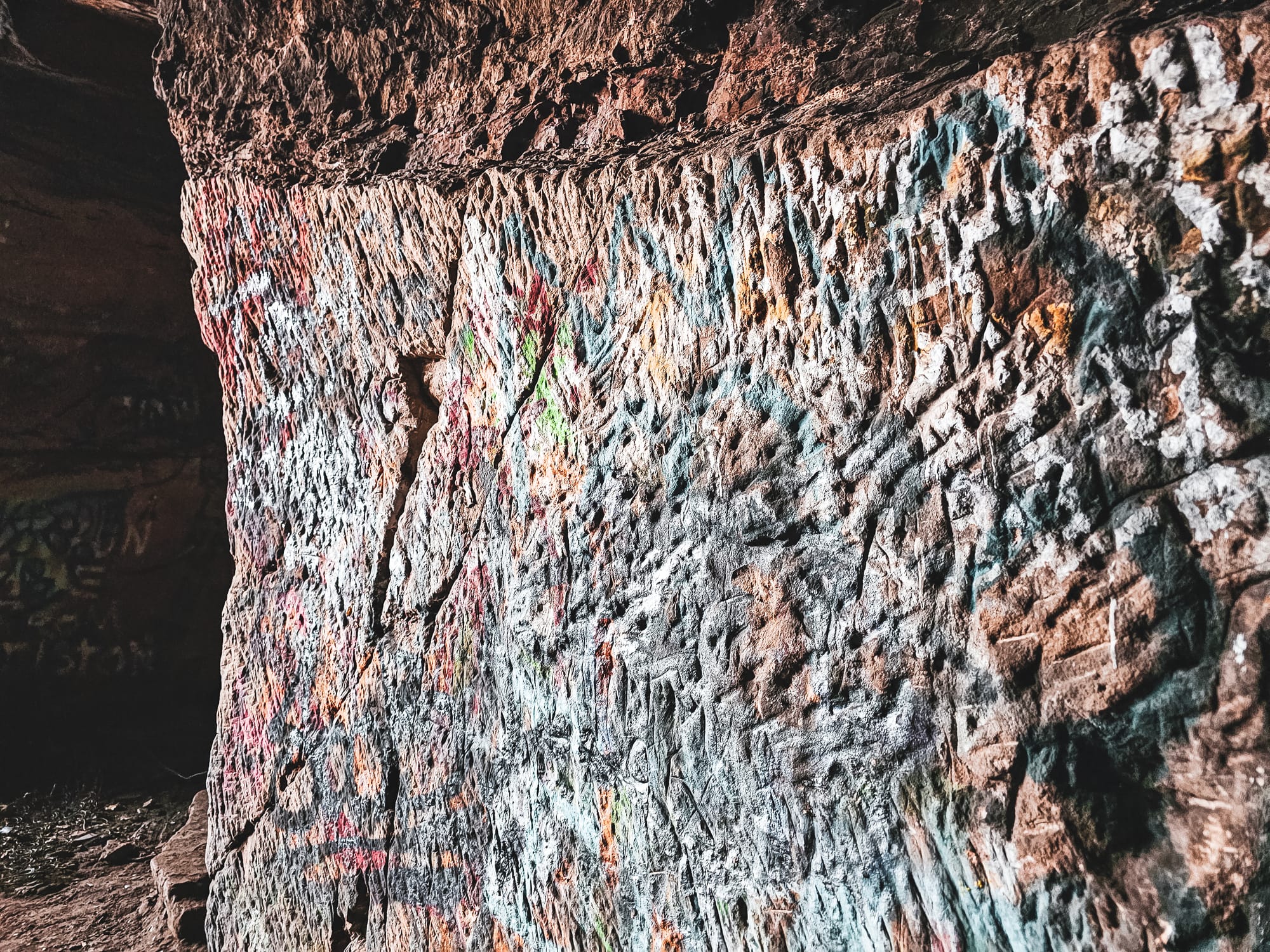
In the 1680s, the Beech Caves area remained a key source for quarrying, reflecting its established role in supplying stone for construction. This ongoing extraction of stone indicates the area's consistent importance in meeting the demand for high-quality red Keuper Sandstone, known for its durability and aesthetic appeal.
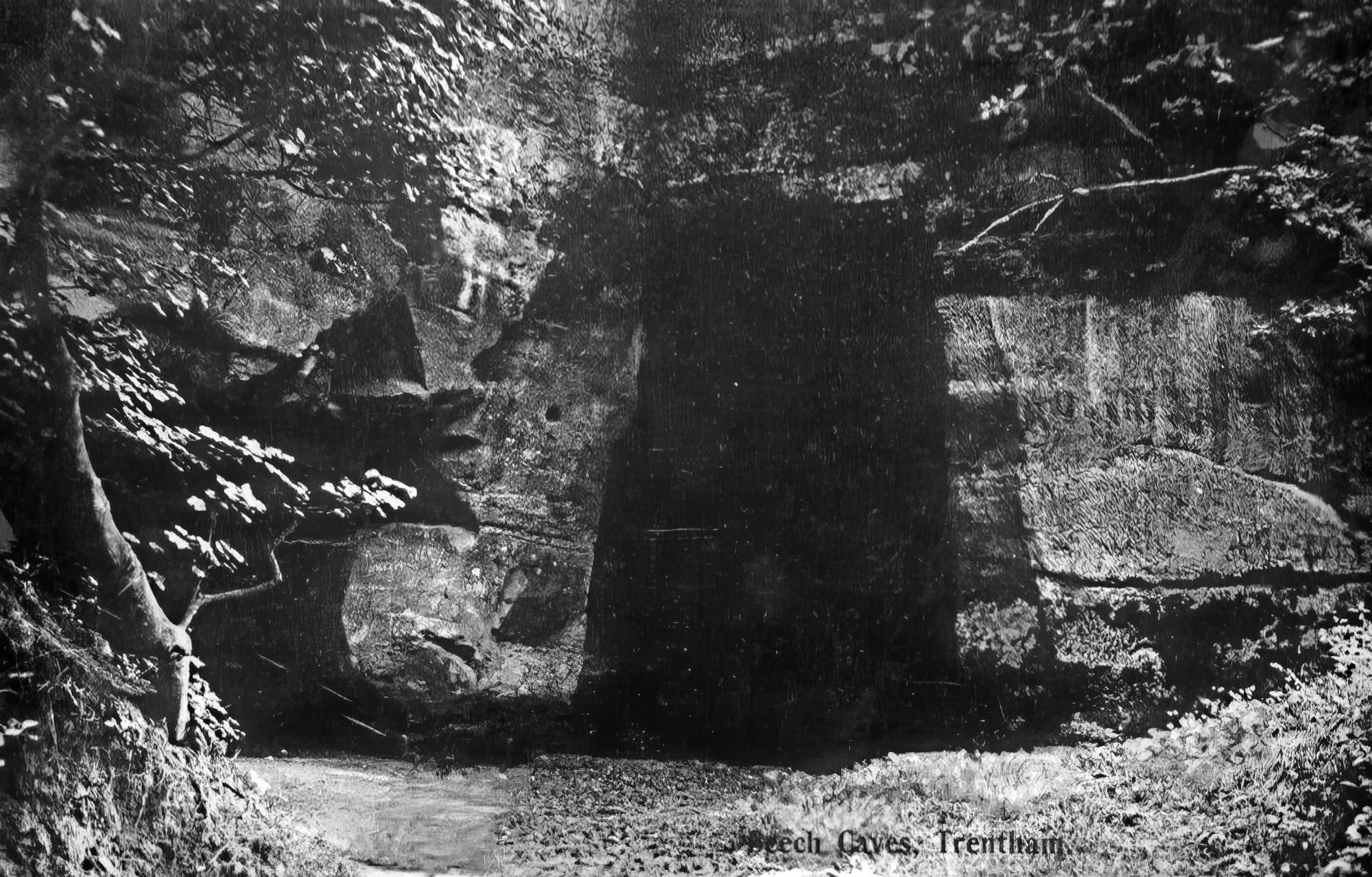
Moreover, the activity in the 1680s shows that there was a solid system in place for the extraction and transport of stone from the site. It highlights the expertise of those involved, from the workers who removed the stone to the craftsmen who incorporated it into buildings, contributing to the area's architectural heritage.
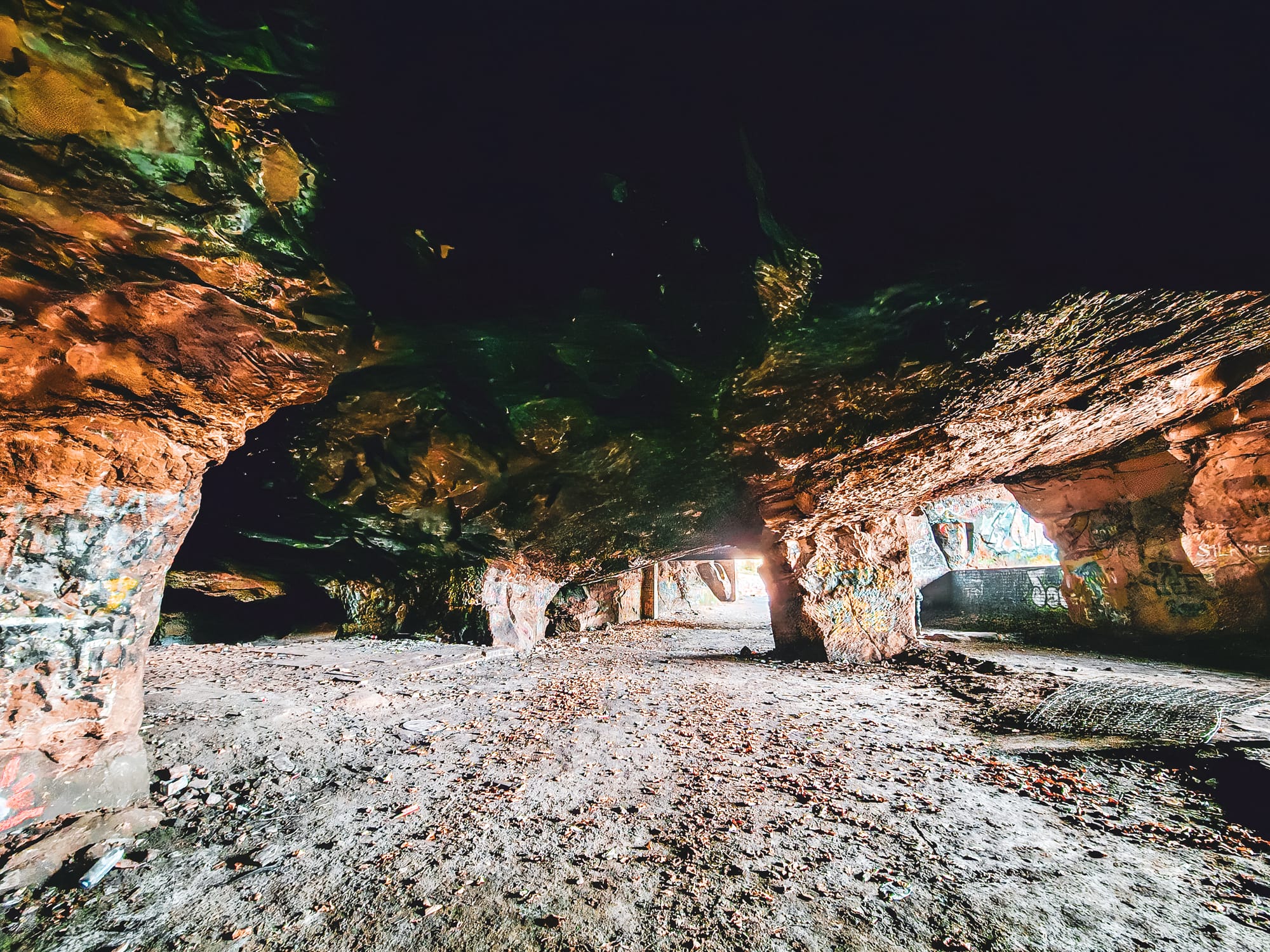
There is no record of further quarrying after this time but the caves served as a versatile venue afterwards for a variety of local community activities. These caverns, known for their historical and geological significance, became a popular destination for local rambling groups drawn to the area for its natural beauty and the sense of adventure that exploring the caves offered. Beyond the allure for outdoor enthusiasts, the caves provided a unique setting for a range of gatherings and events.
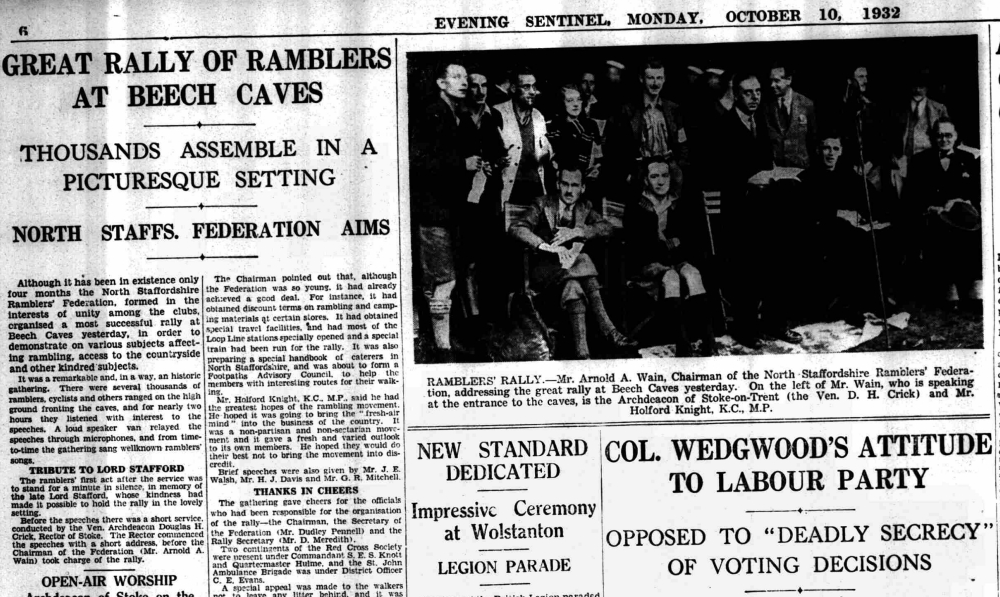
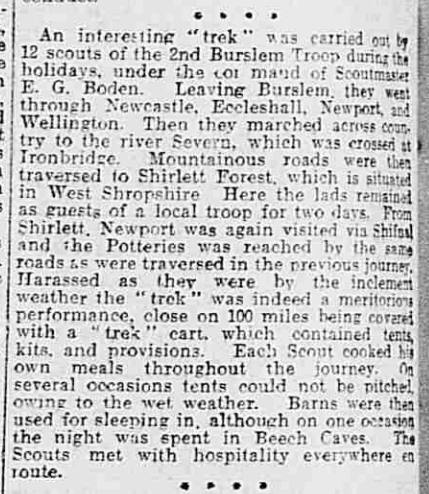
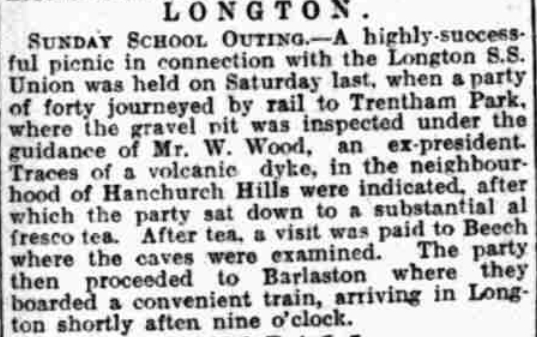
Staffordshire Sentinel - Monday 10 October 1932, Thursday 22 August 1912, Tuesday 30 August 1910
Religious talks and meetings found an unconventional home within the caves, where the natural acoustics and secluded environment lent a sense of solemnity and introspection to spiritual discussions. The enclosed and tranquil setting of the caves made them an ideal location for such gatherings, offering a retreat from the outside world that was conducive to reflection and community bonding.

Scout campovers represent another chapter in the caves' long history of community use. Scouts from the local area and beyond utilized the caves for overnight stays, taking advantage of the sheltered environment to learn about nature, survival skills, and camaraderie. These campovers in the caves allowed young people to connect with the natural world in a direct and meaningful way, fostering a sense of adventure and exploration.
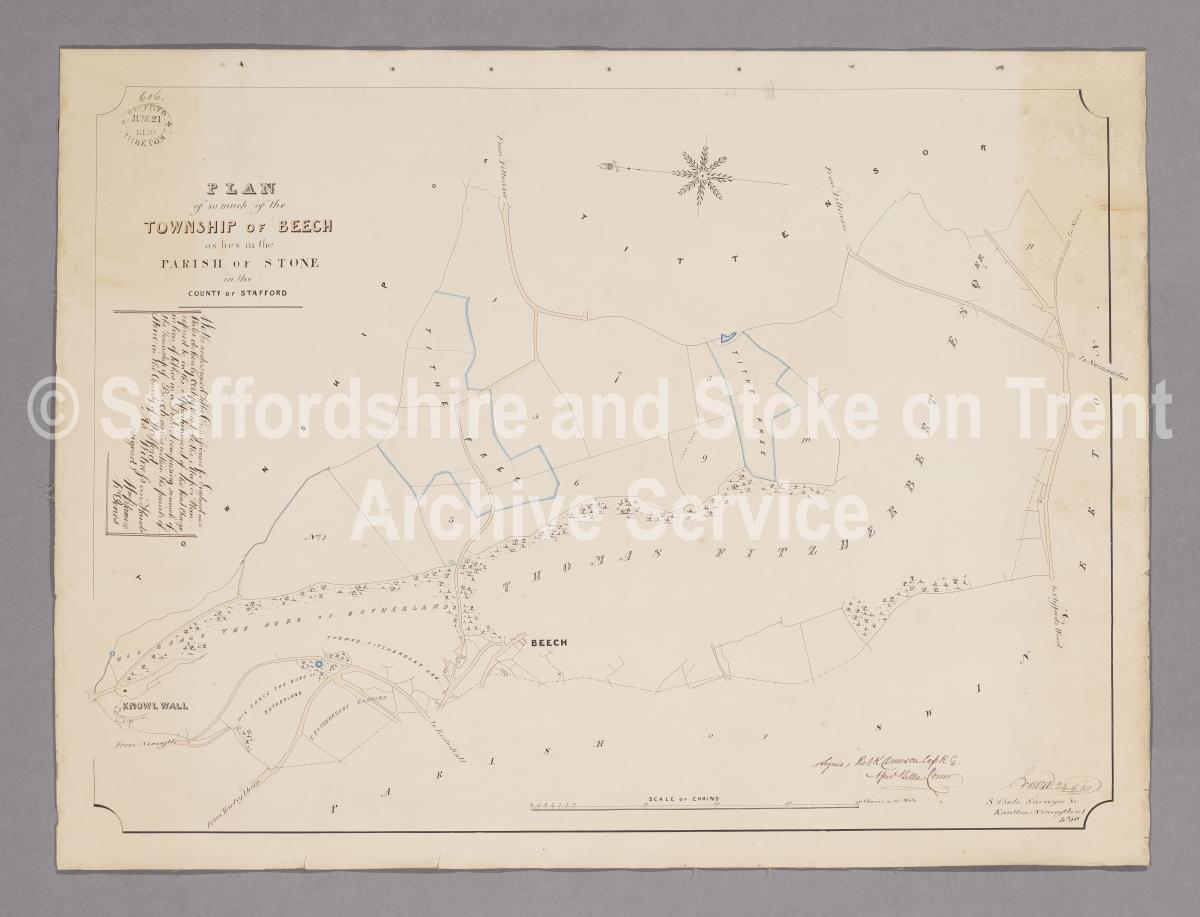
Stone, Staffordshire: Beech township tithe mapTithe maps and tithe awards are invaluable for the history of villages, properties, families, agriculture and landscape in England and Wales in the period 1837 – 1852. Tithe maps are usually drawn at ...View Full Resource on Staffordshire Past Track
In 1850 the Tithe map provided a detailed representation of land ownership and usage, revealing that the woodland area containing the Beech Caves was owned by Thomas Fitzherbert. Interestingly, this map did not mark the presence of the cave or the quarry, despite their significance in the local area's history and economy.
The absence of the cave and quarry on the map could reflect the map's focus on surface land use and ownership rather than detailing every natural and man-made feature. Alternatively, it might suggest a period of reduced quarrying activity or a shift in the land's primary use under Fitzherbert's ownership.
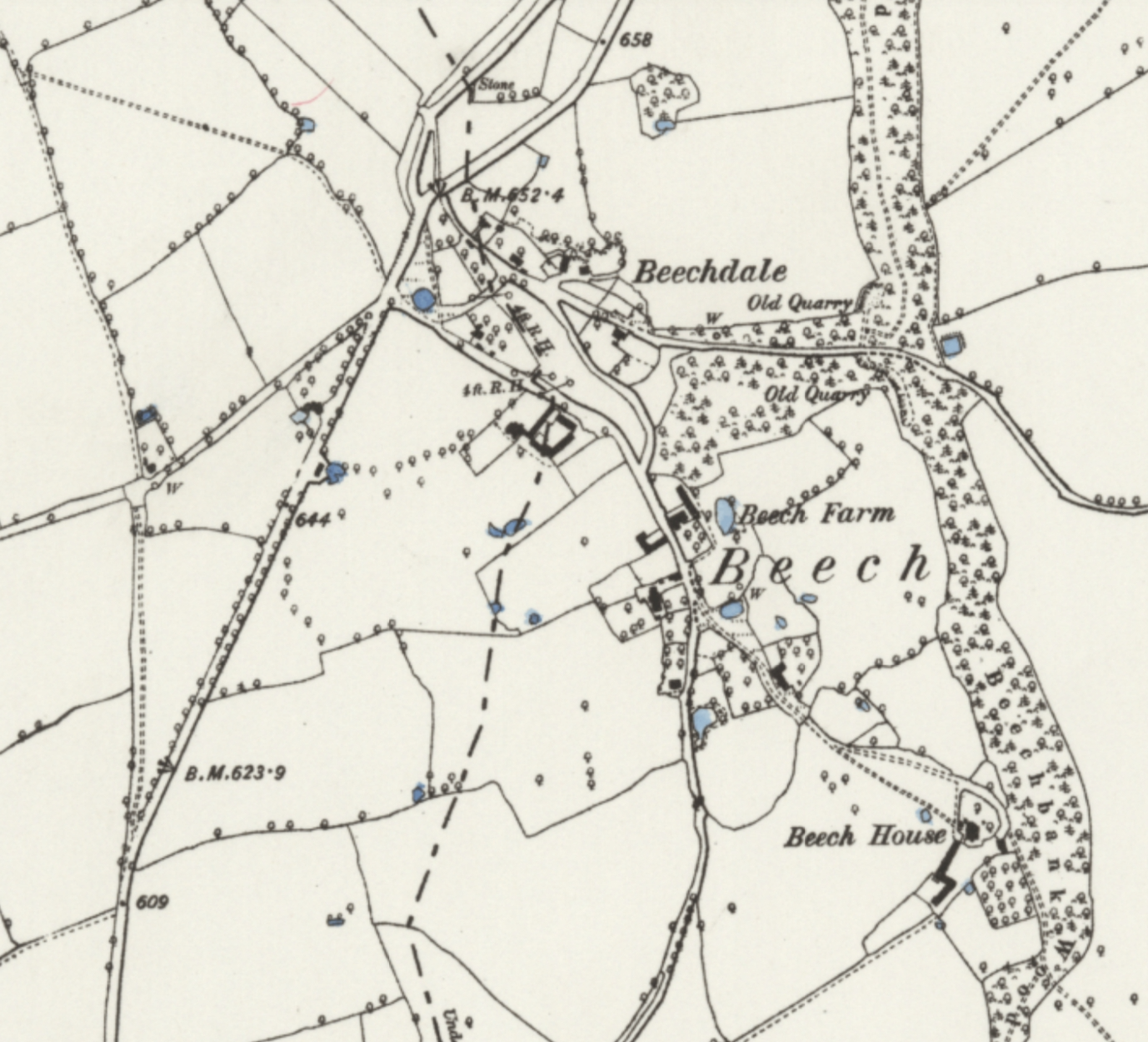
In the 1880s, the first Ordnance Survey map of the Beech Caves area marked a significant development in the documentation of local geography and industry. For the first time, an "Old Quarry" was recorded on both sides of the road, officially acknowledging the site's history of quarrying activities. This inclusion on the map is pivotal as it provides a tangible link between the area's geological resources and its contribution to the local economy and landscape.
The designation of the site as an "Old Quarry" suggests that by 1885, the quarrying activities might have been in decline or ceased. This map entry serves as a historical marker, offering insights into the extent and location of quarrying operations that utilized the rich deposits of red Keuper Sandstone found in the area.
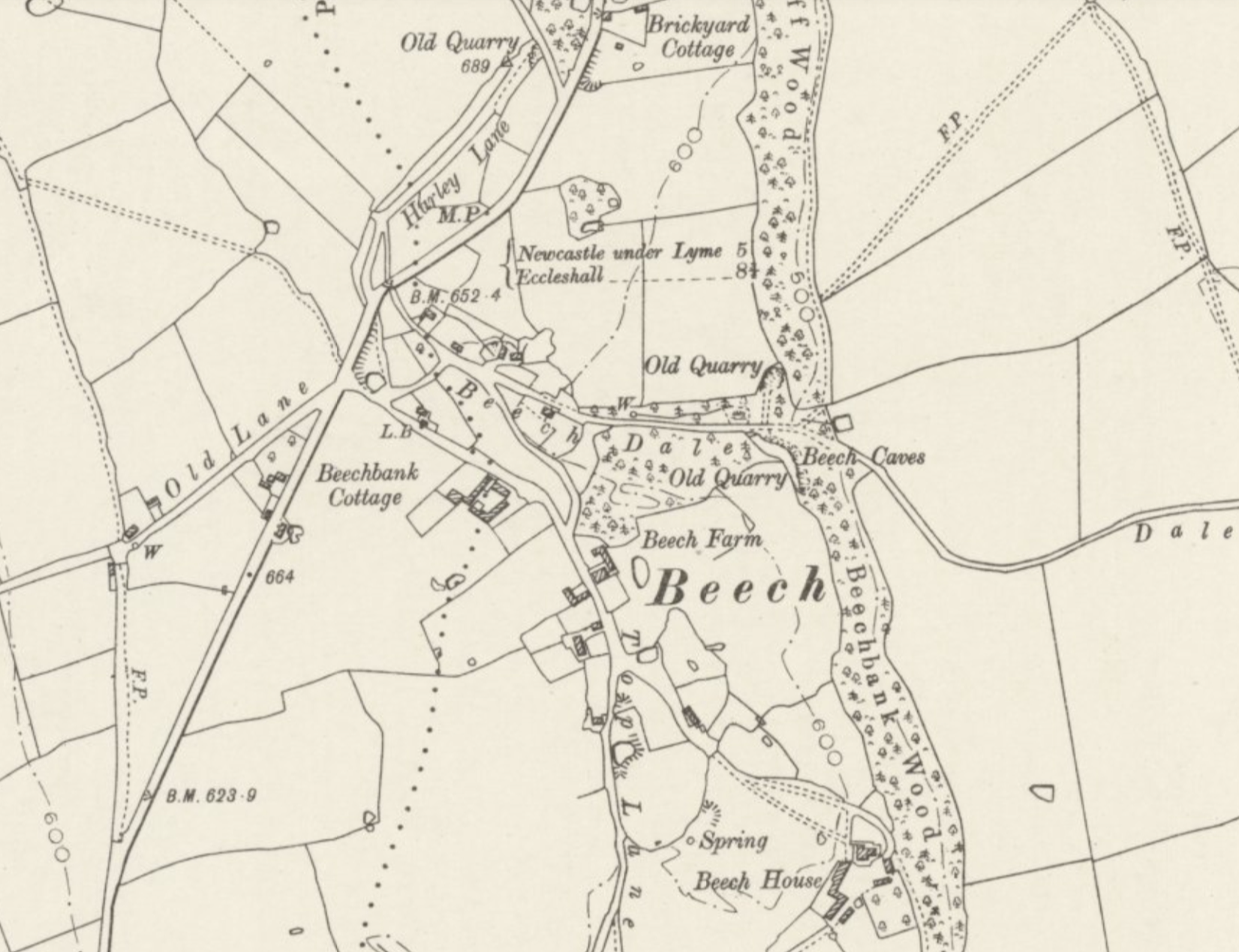
By 1924, the representation of the Beech Caves area on maps took a significant turn. For the first time, the cave was officially designated as "Beech Caves" on a map, pinpointed just south of a minor road. This marked a notable moment in the area's history, formally recognizing the caves not just as a geographical feature but as a named landmark.
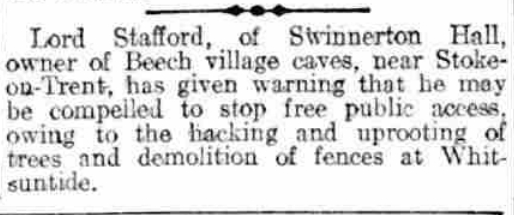
In 1932, an intriguing discovery inside the Beech Caves added a layer of history to the site. According to an article in the Staffordshire Sentinel, a well-worn shilling from the reign of Charles the 1st was found within the caves. Charles the 1st ruled England from 1625 to 1649, so this ties in perfectly with the first recorded quarrying activity in 1633. The shilling confirms human activity or presence in the caves during or after that period.
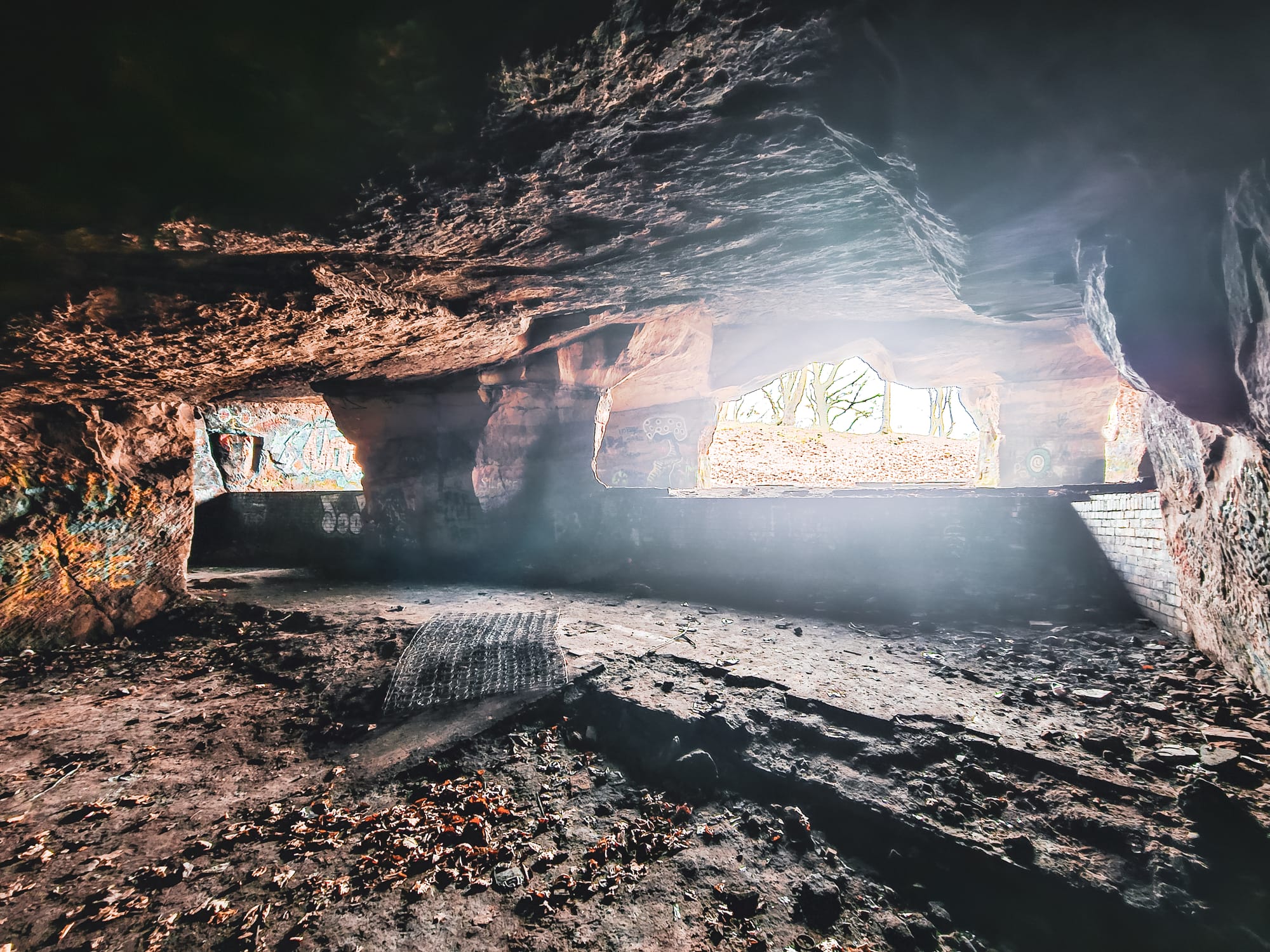
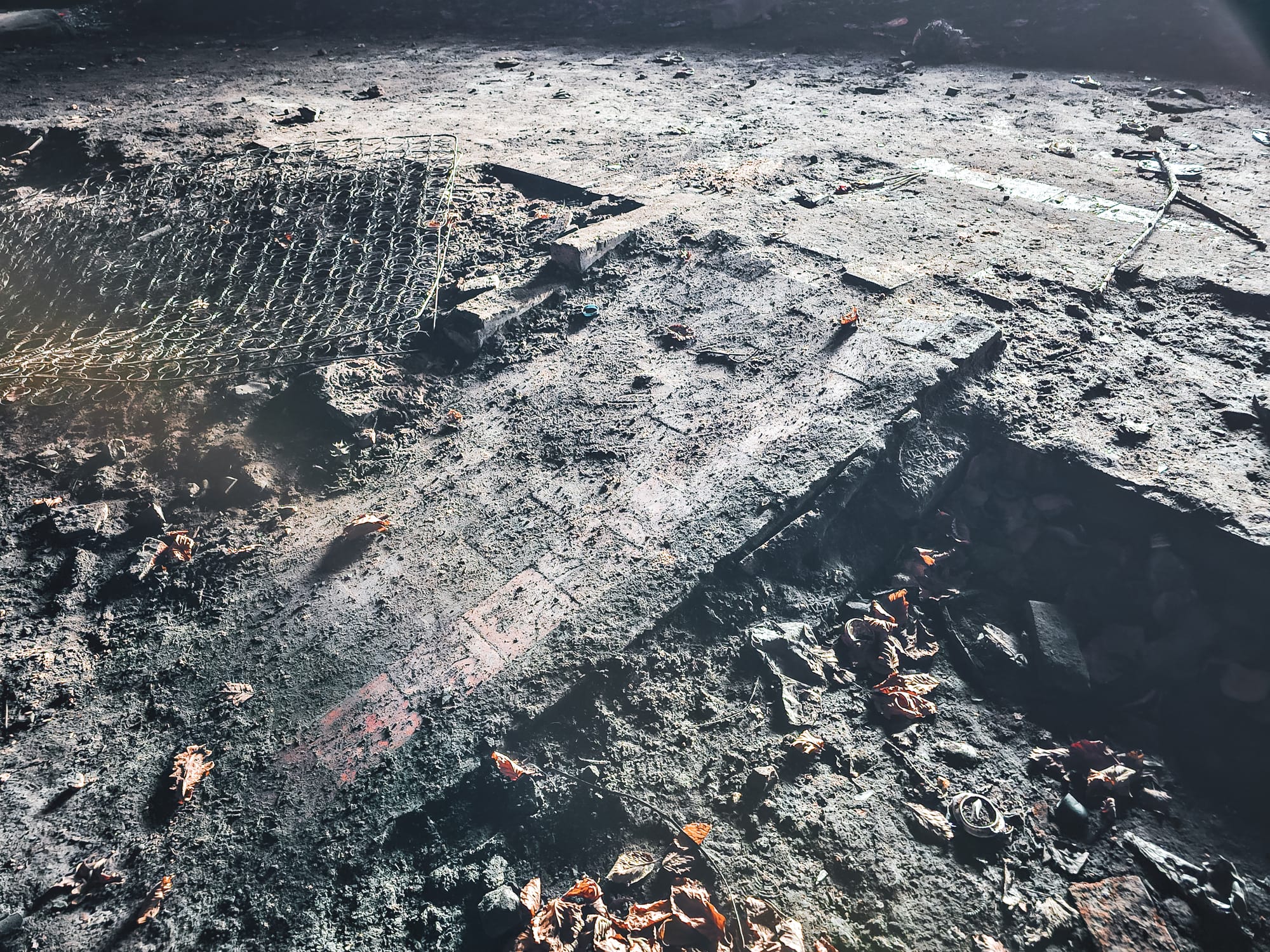
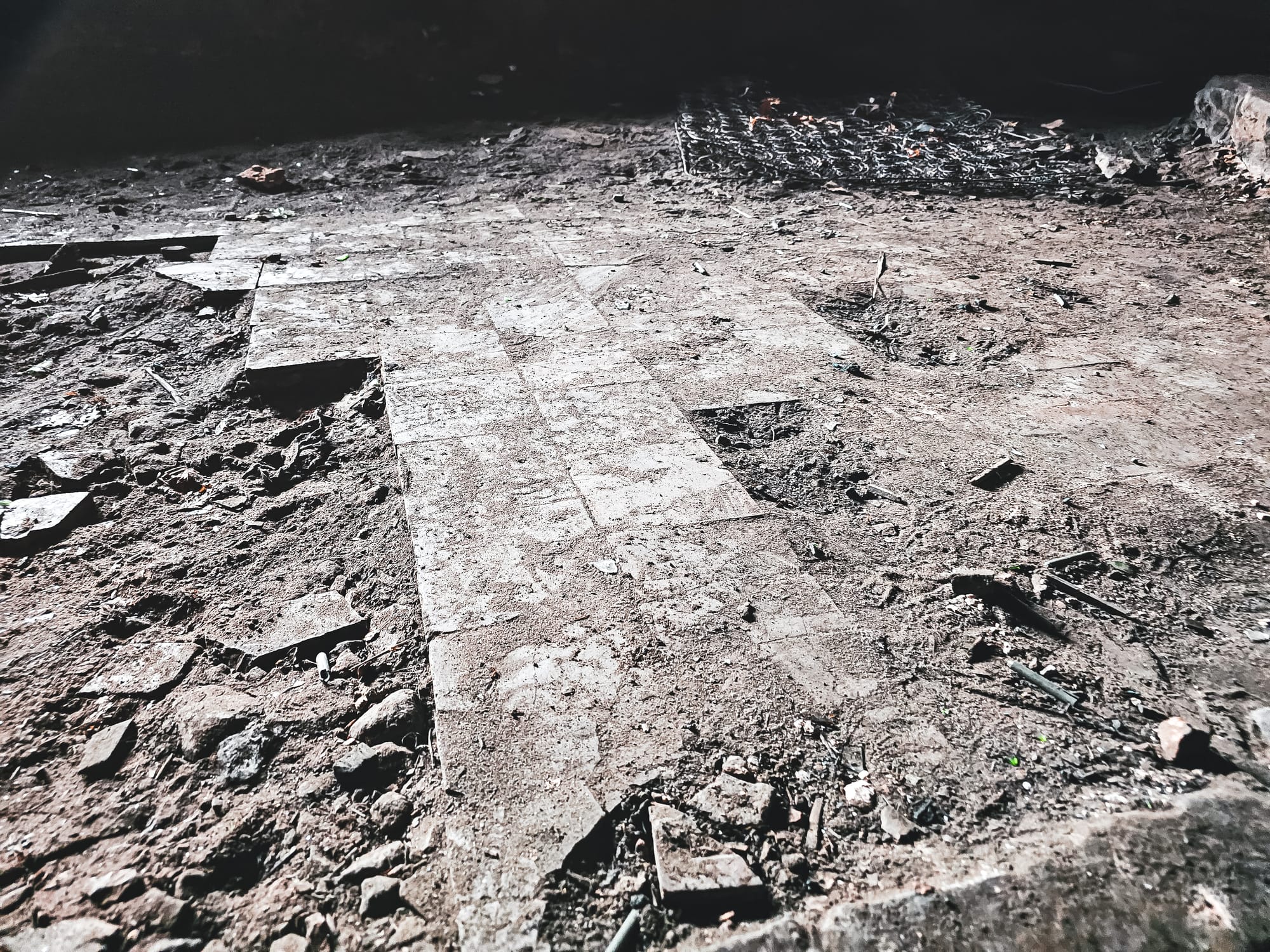
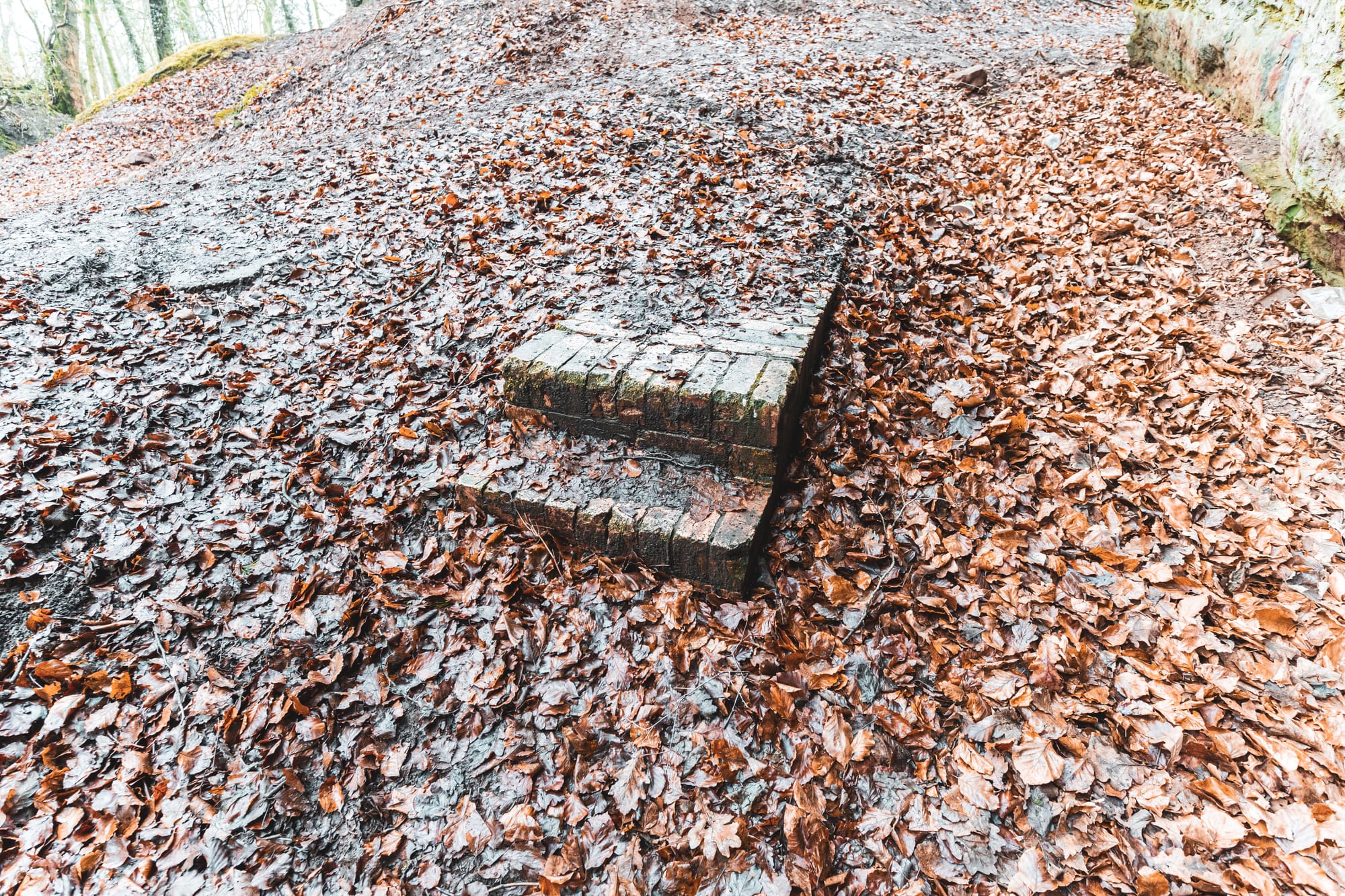

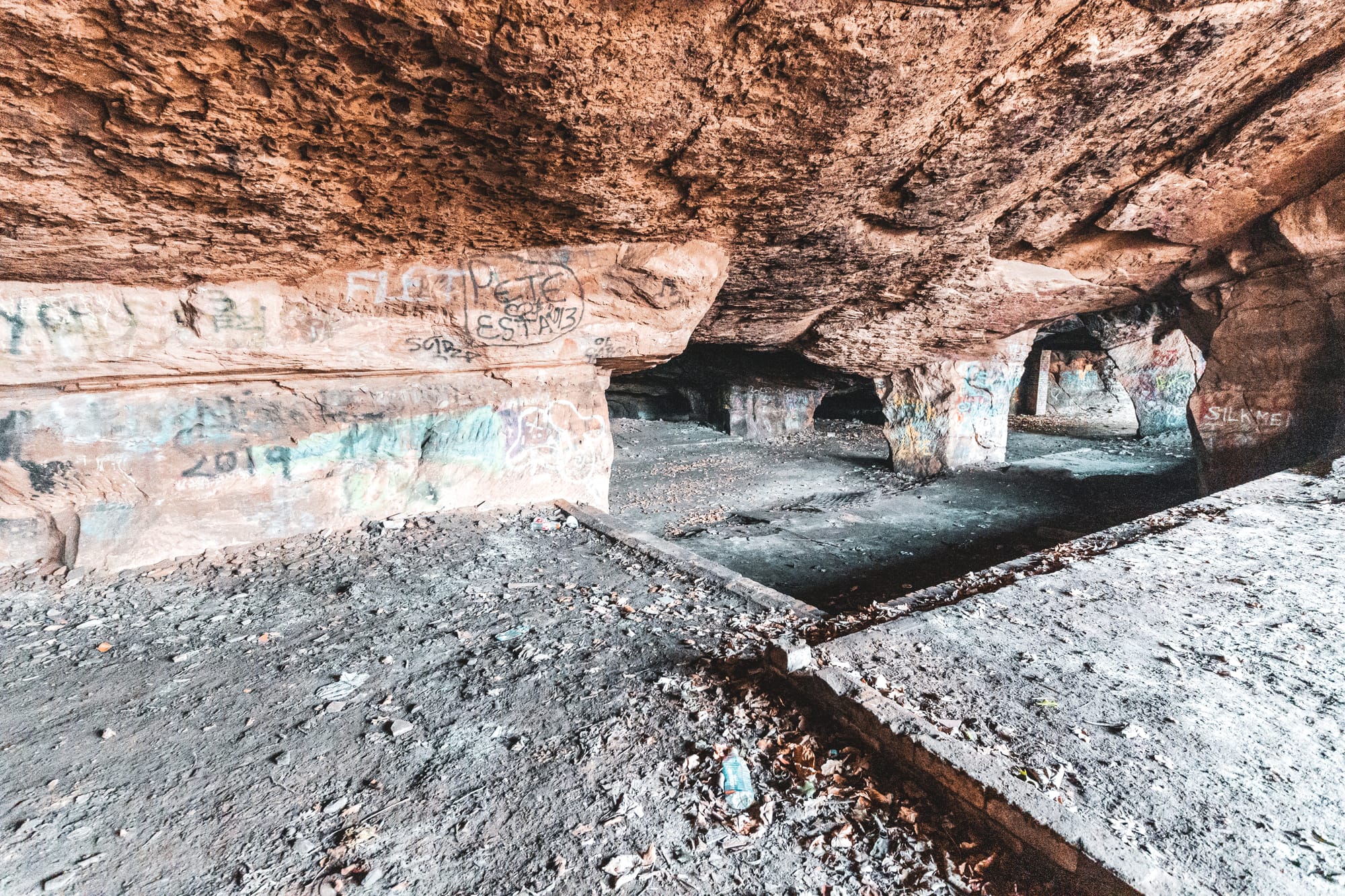
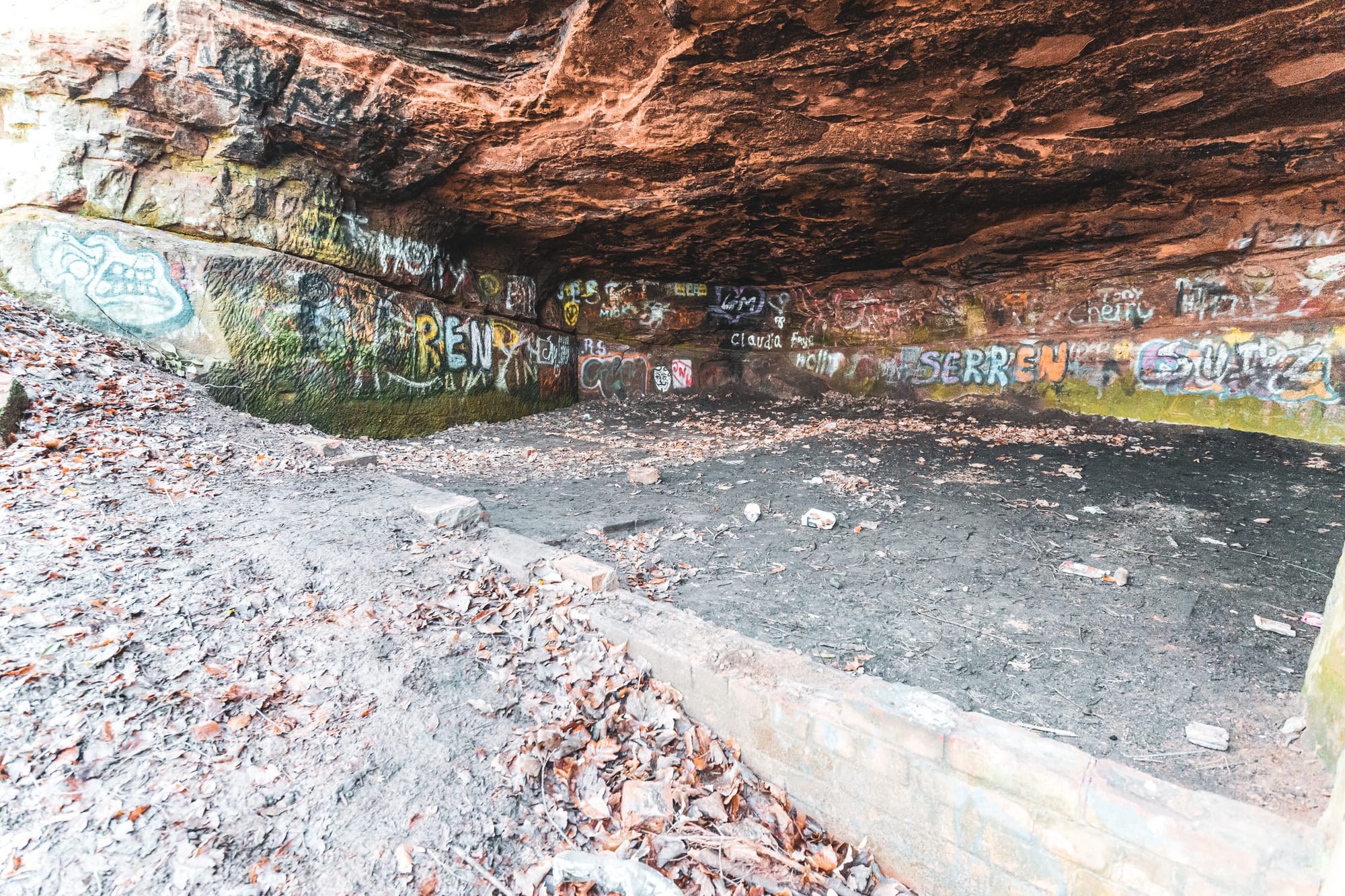
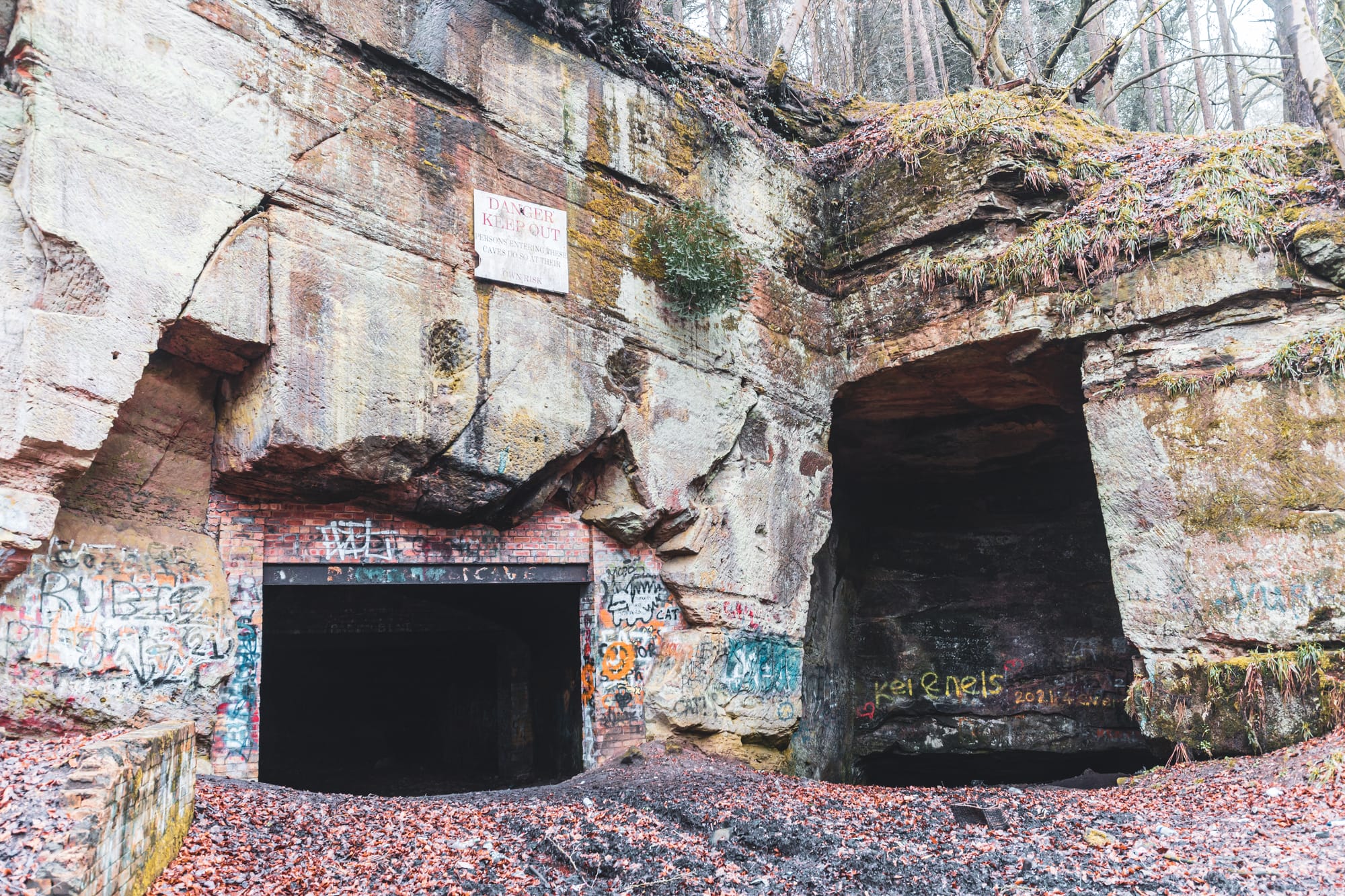
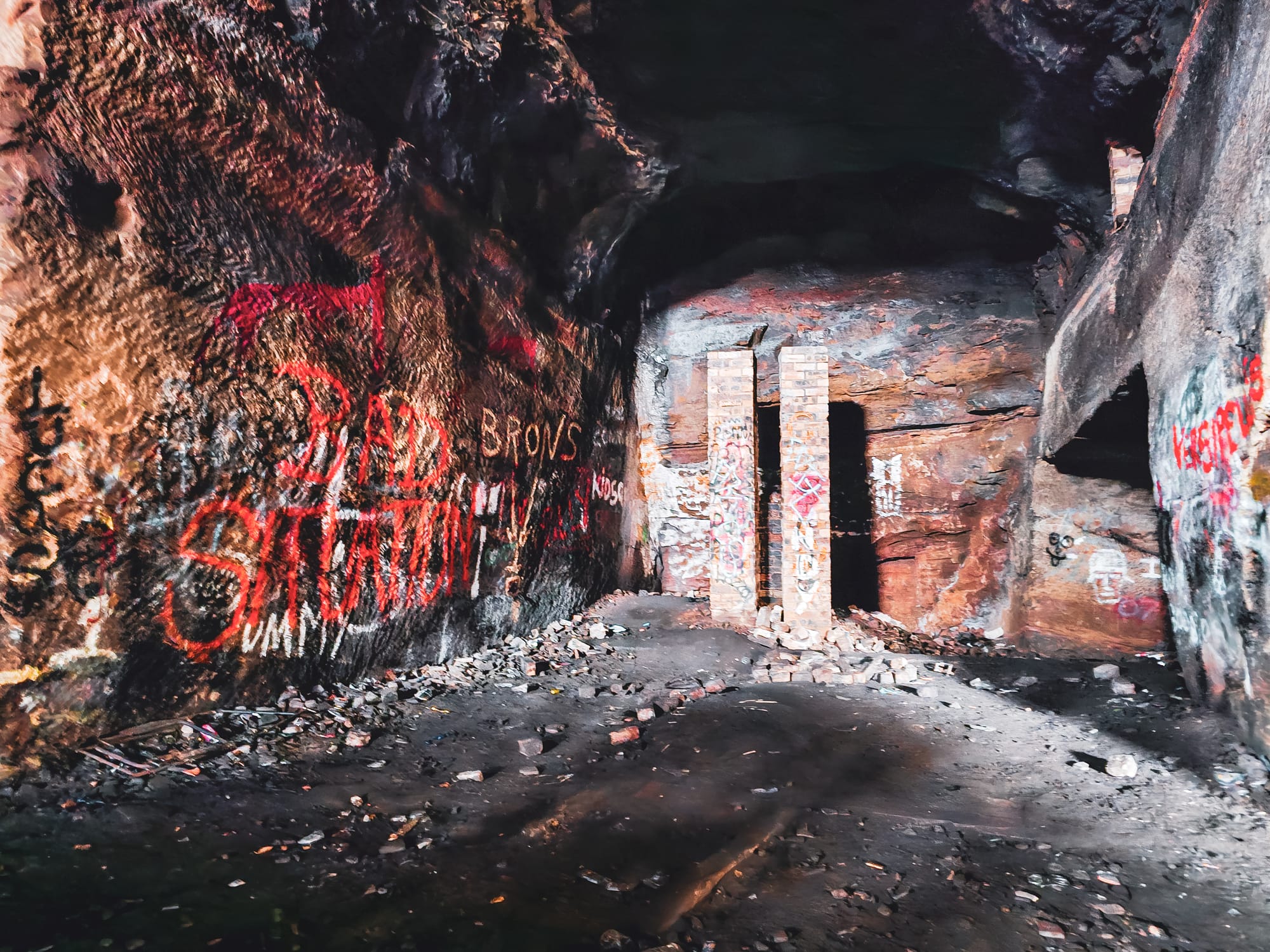
The brick walls, tiled floors, ramps and steel girders over the doors must have been built during WW2, which is more evidence that the caves were used for something that needed to be sealed and secure
During the Second World War, the Beech Caves were enveloped in mystery and speculation, largely due to being declared "out of bounds" to the local populace. This restriction led to widespread belief that the caves were repurposed for military use, with theories suggesting they served as a storage magazine for ordnance, either for the Swynnerton Ordnance Factory or the military base at Trentham. Adding to the intrigue, there were also rumours, unsupported by official records, that the caves played a part in safeguarding the UK's gold reserves.
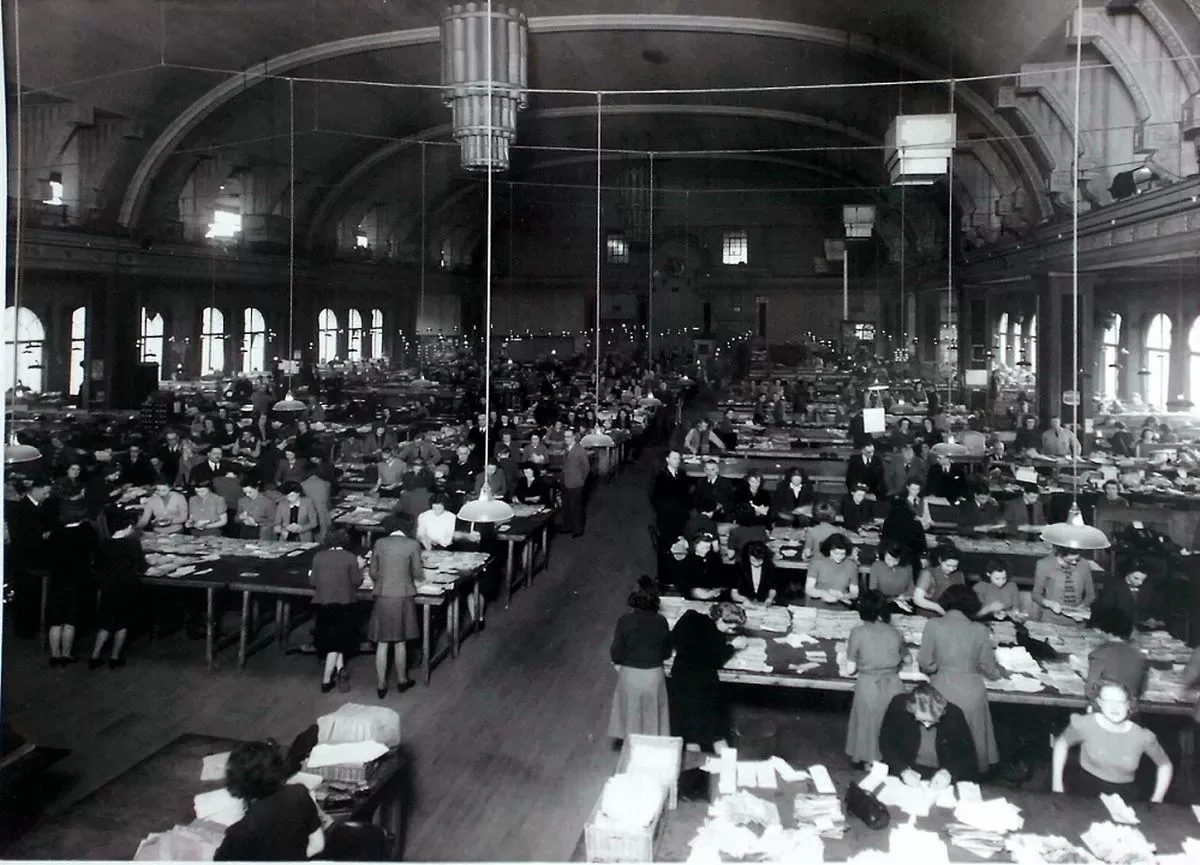
This speculation was fueled by the wartime adaptation of Trentham Gardens' ballroom by the Bank of England, hinting at the strategic importance of the area in national defence and financial security efforts. Trentham played a crucial role in Britain's financial operations. The movement of workers from London began in 1939, with all equipment moved by road convoys as 1,000 personnel arrived by two specially equipped trains. The Ballroom at Trentham, where the Garden Centre is now built, was used as the Central Clearing House for the Bank of England, a pivotal operation moved from London to escape the Blitz. This relocation on 26th August 1939 saw staff from different banks across the country moving to Trentham, maintaining the country's financial stability during the war.
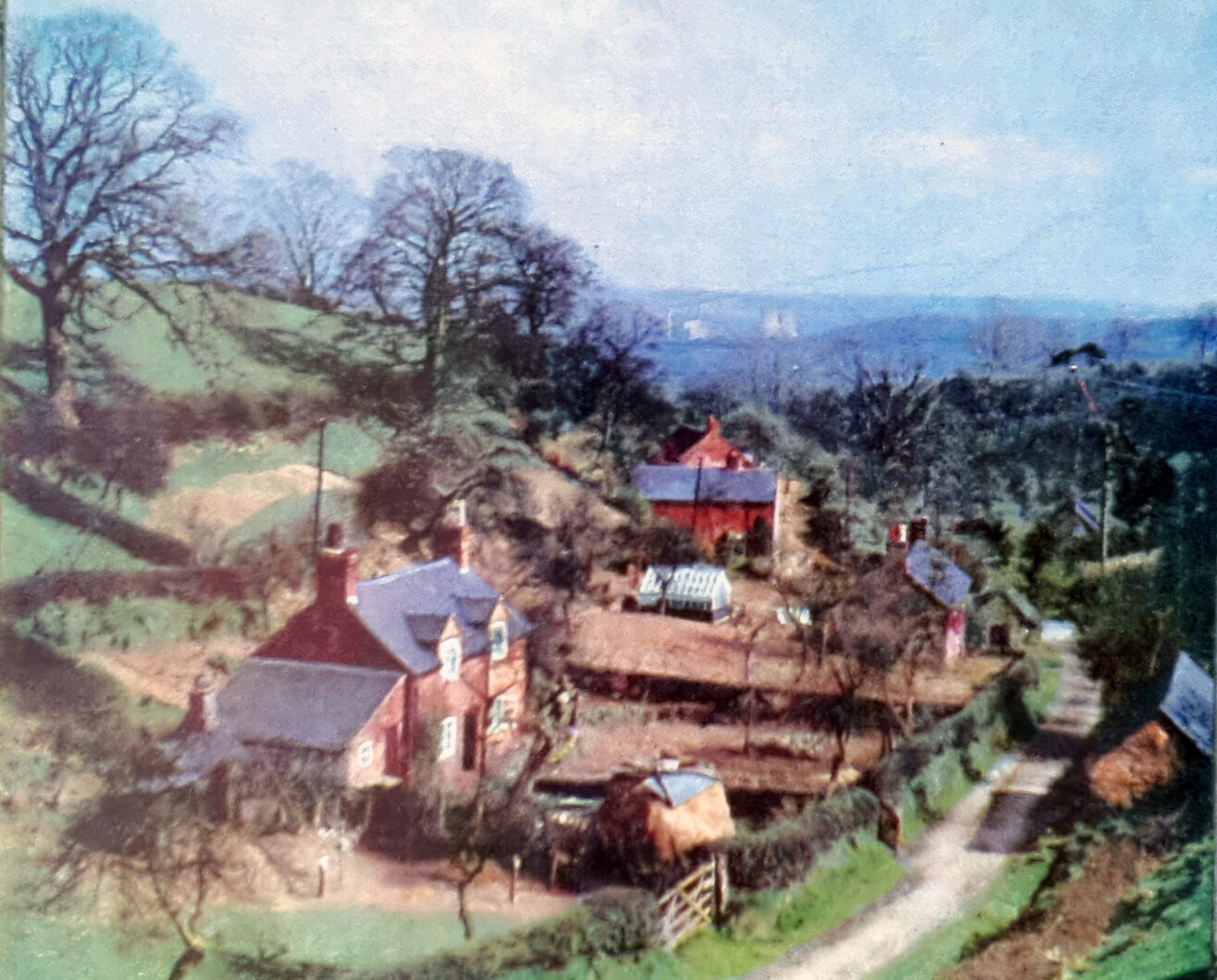
A Beech resident, Mrs Pickering, provided a personal account that added another layer to the caves' wartime narrative. In a 1987 interview with the Staffordshire Sentinel, she recalled the caves being used as a decoy operation, intended to mislead enemy forces and protect ROF Swynnerton. Her story is supported by her experiences hosting 8 RAF officers from the RAF Control Centre at Beech during the war, lending credence to the notion that the Beech Caves area was of strategic military significance.
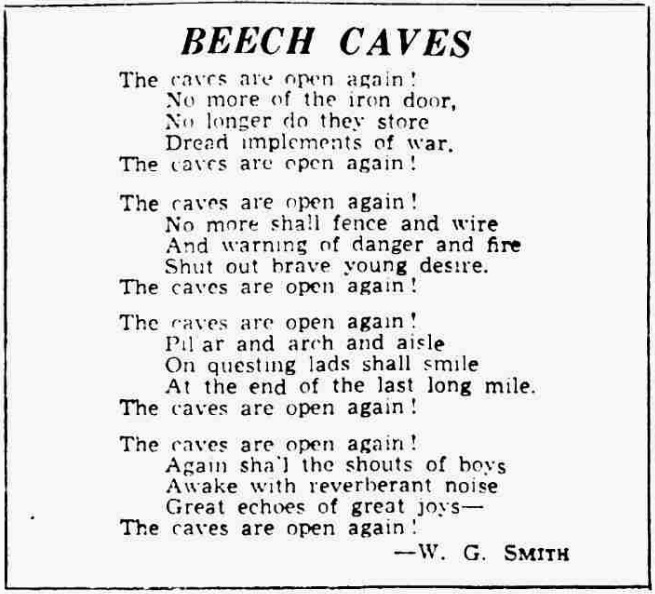
The lack of official documentation leaves these accounts as fascinating glimpses into the potential roles played by the Beech Caves during a tumultuous period in history. Whether as a site for ordnance storage, a safeguard for national treasures, or a decoy in the broader strategy of wartime defence, the caves represent a chapter in the local and national narrative of World War II.

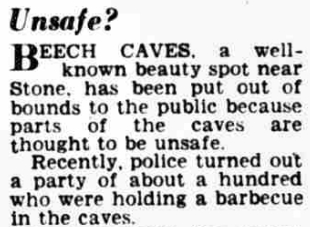
In the period following the Second World War, the Beech Caves entered a new chapter in their history, transitioning from their mysterious wartime roles to a venue for social gatherings. After being abandoned by the Ministry of Defence (MoD), they found a new lease on life as an unofficial party and rave location. As early as the 1950s there were unruly social gatherings in the caves.
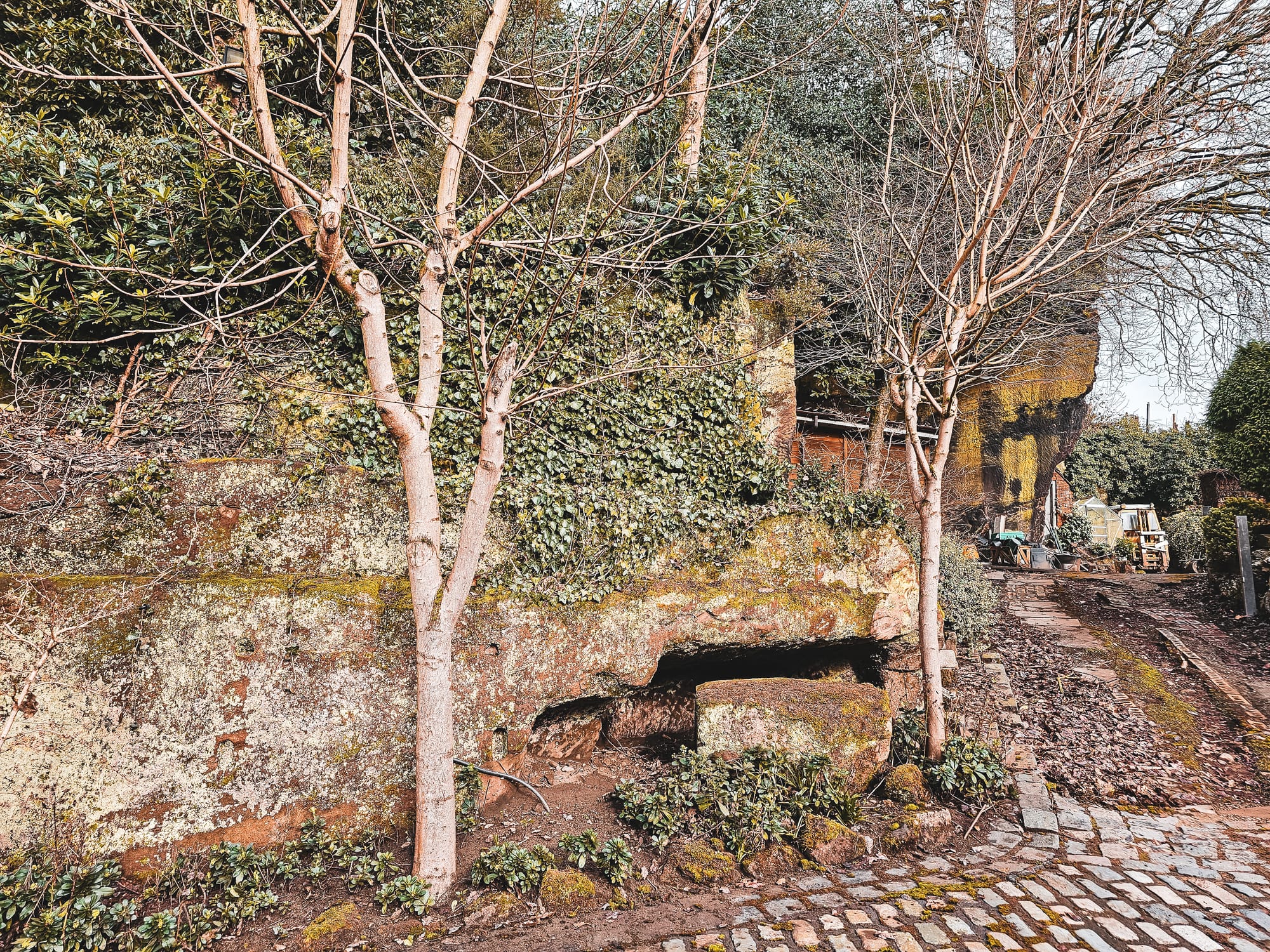
Tony and Gail Green, residents of Beechdale Cottage, have a unique connection to the local history of Beech, a connection rooted in the area's quarrying past. Their home is situated on land that was once part of the bustling quarry operations near the Beech Caves. Unlike the caves, their property features a rock face that was quarried.
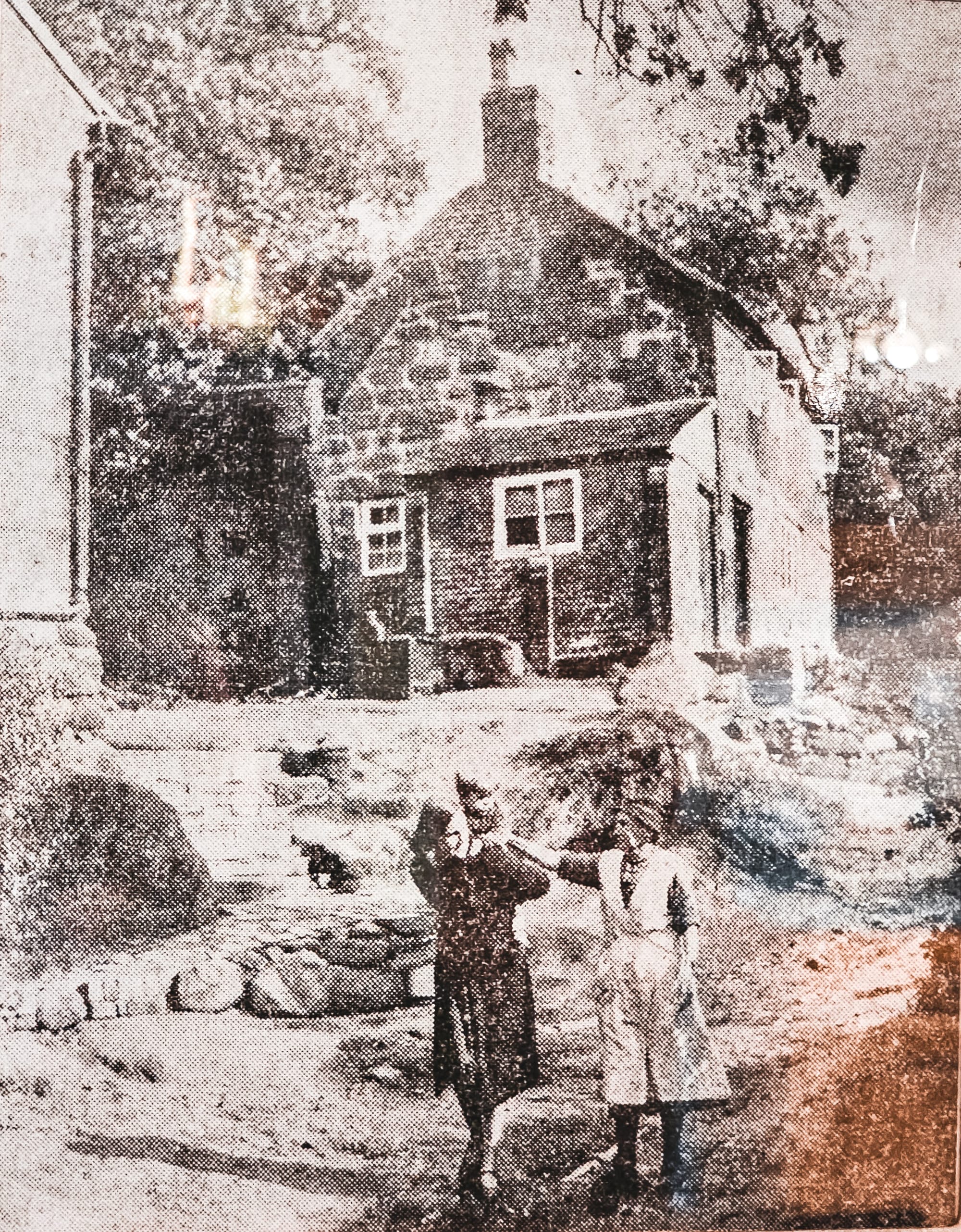
When the Greens purchased the land, it came with two cottages, each bearing the marks of the quarry's legacy. One cottage was ingeniously built into the rock face itself, likely the same structure noted by the North Staffordshire Naturalists’ Field Club for its distinctiveness—houses seemingly carved from the very rock of the area. The other cottage stood nearby, both constructed from the quarry's rock, serving as homes for the workers who toiled within the quarry.
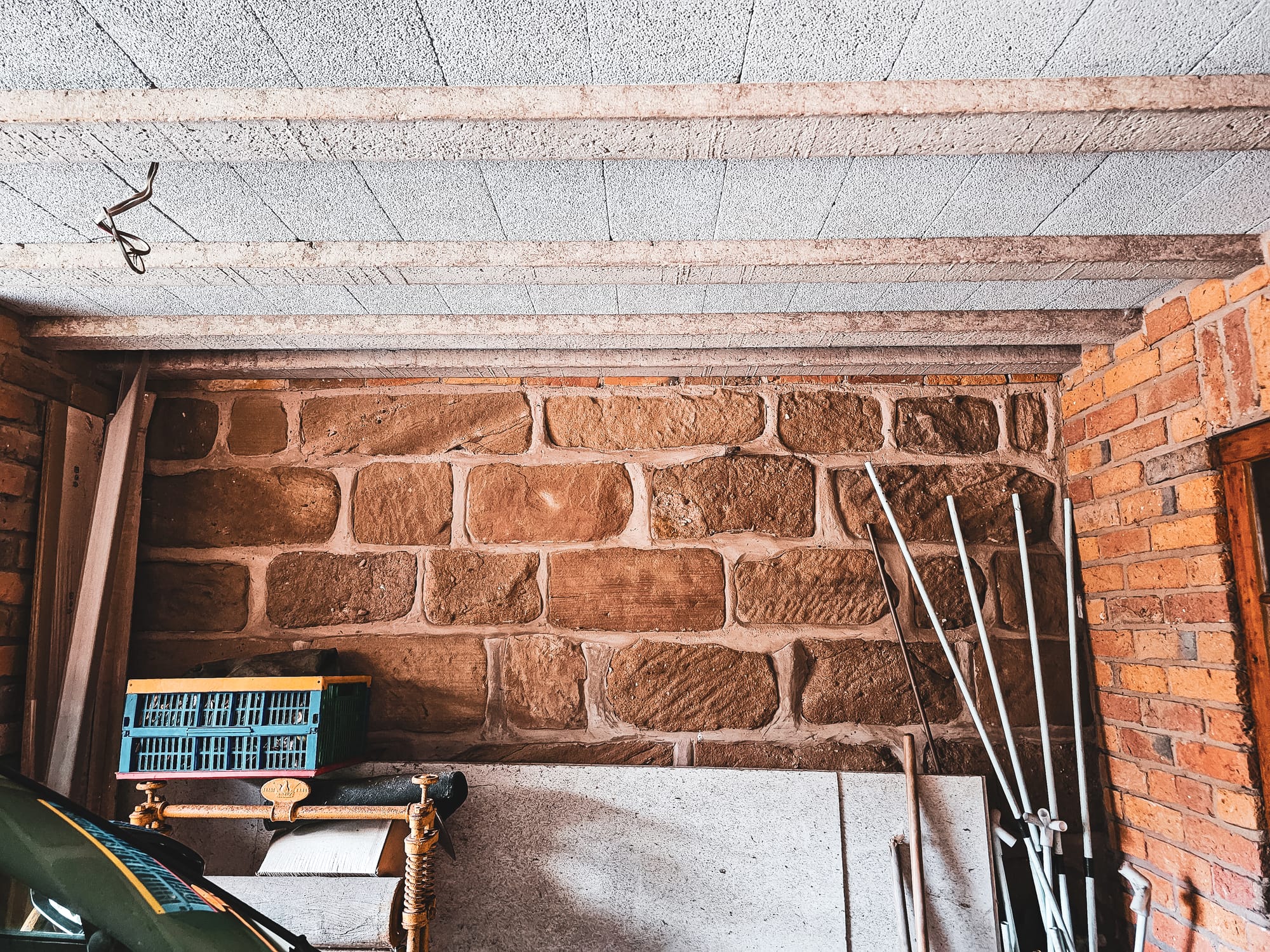
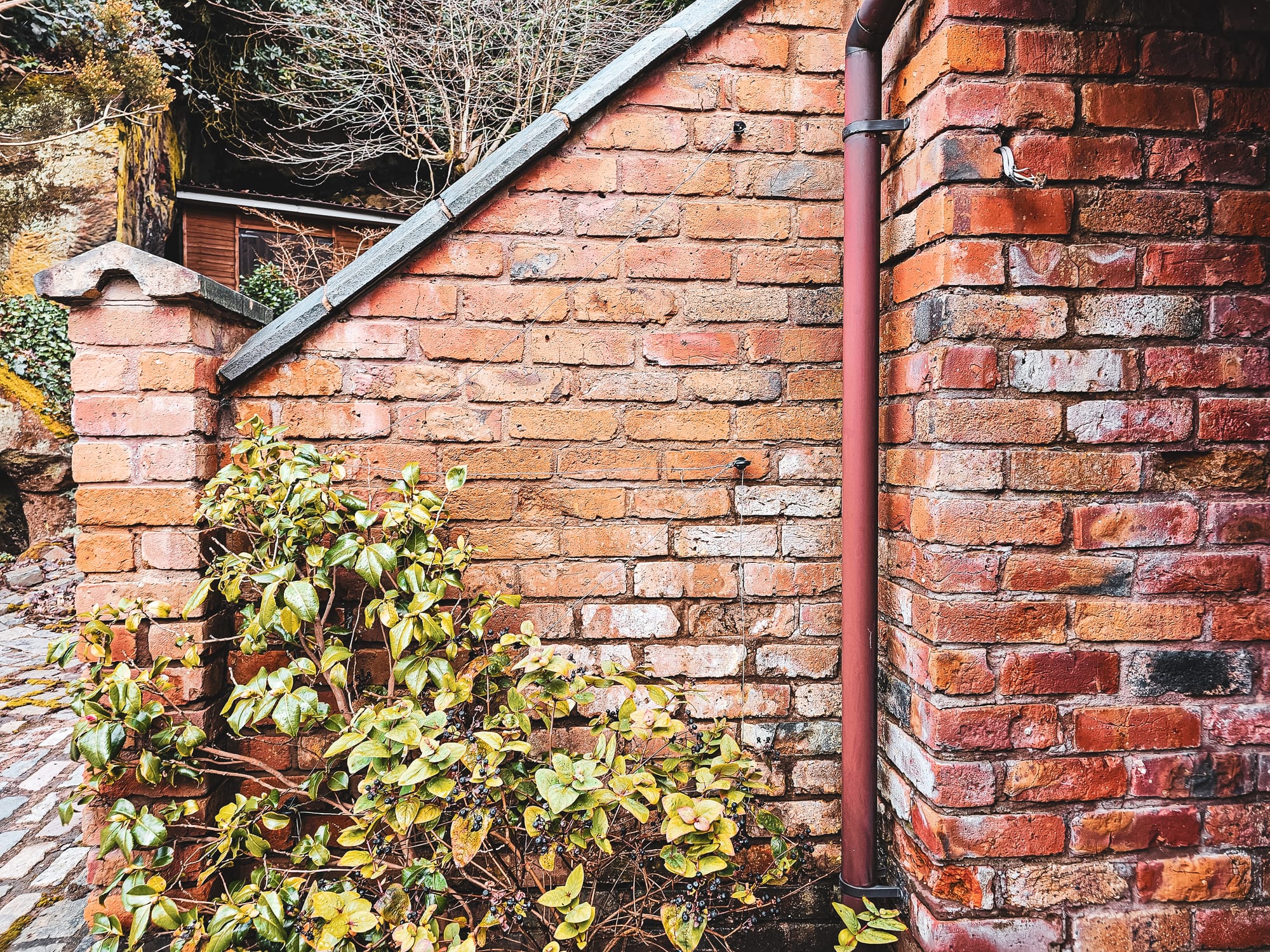
The bricks and stones from the cottage that have been reused
Due to their deteriorating condition, the Greens made the difficult decision to demolish these cottages. However, in a nod to sustainability and respect for the history encapsulated in their materials, Tony repurposed the brick, local stone, and beams from the demolished structures into the creation of their current home, Beechdale Cottage. Constructed in 1987, this new dwelling was built with Hollington stone, acquired through a barter of stone from his quarry.
Their property also hosts what is believed to be the oldest building in Beech—a small brick structure that once served as a toilet, with the remnants of a pig sty nearby. This feature adds another layer to the history of Beech.
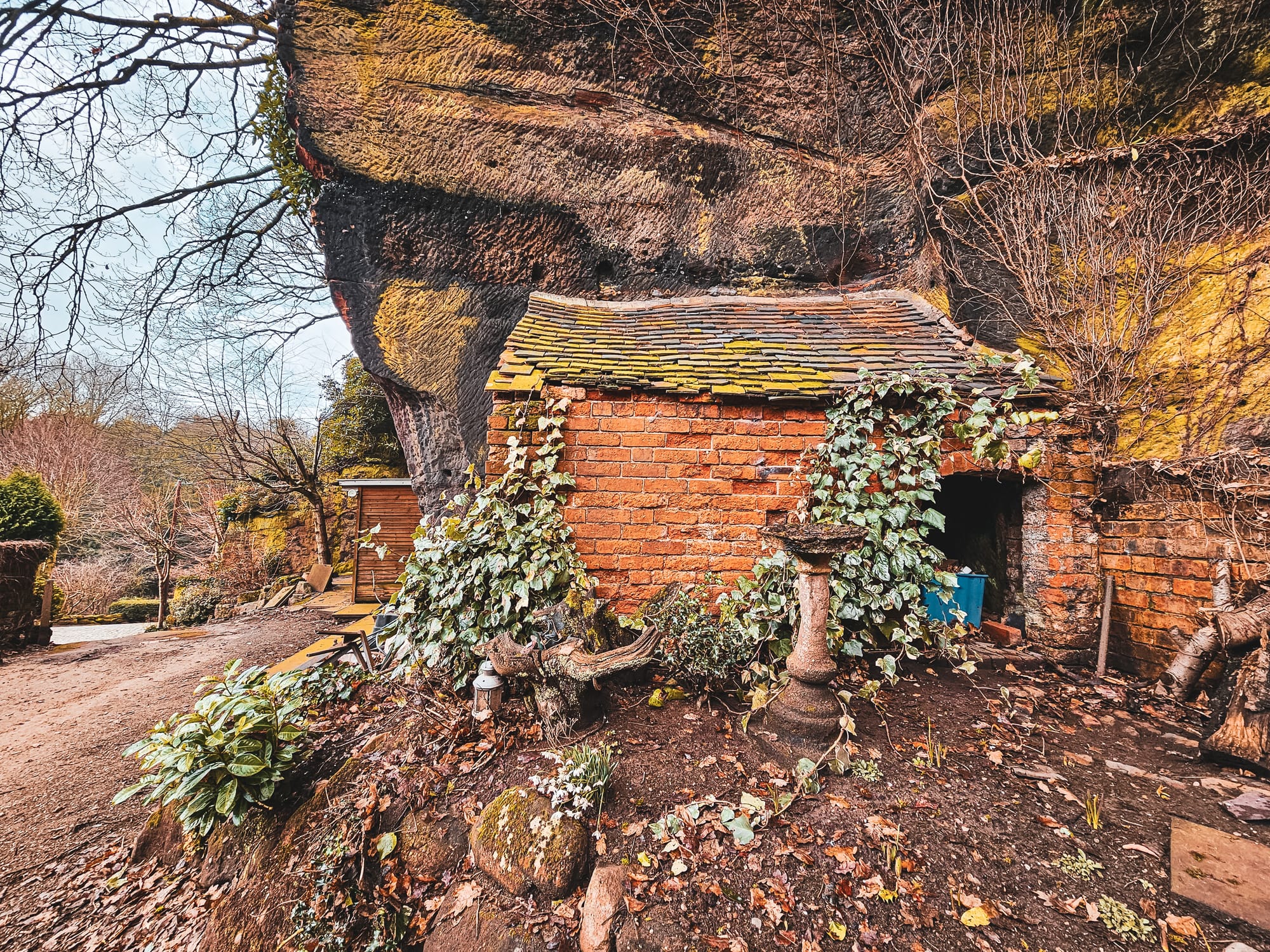
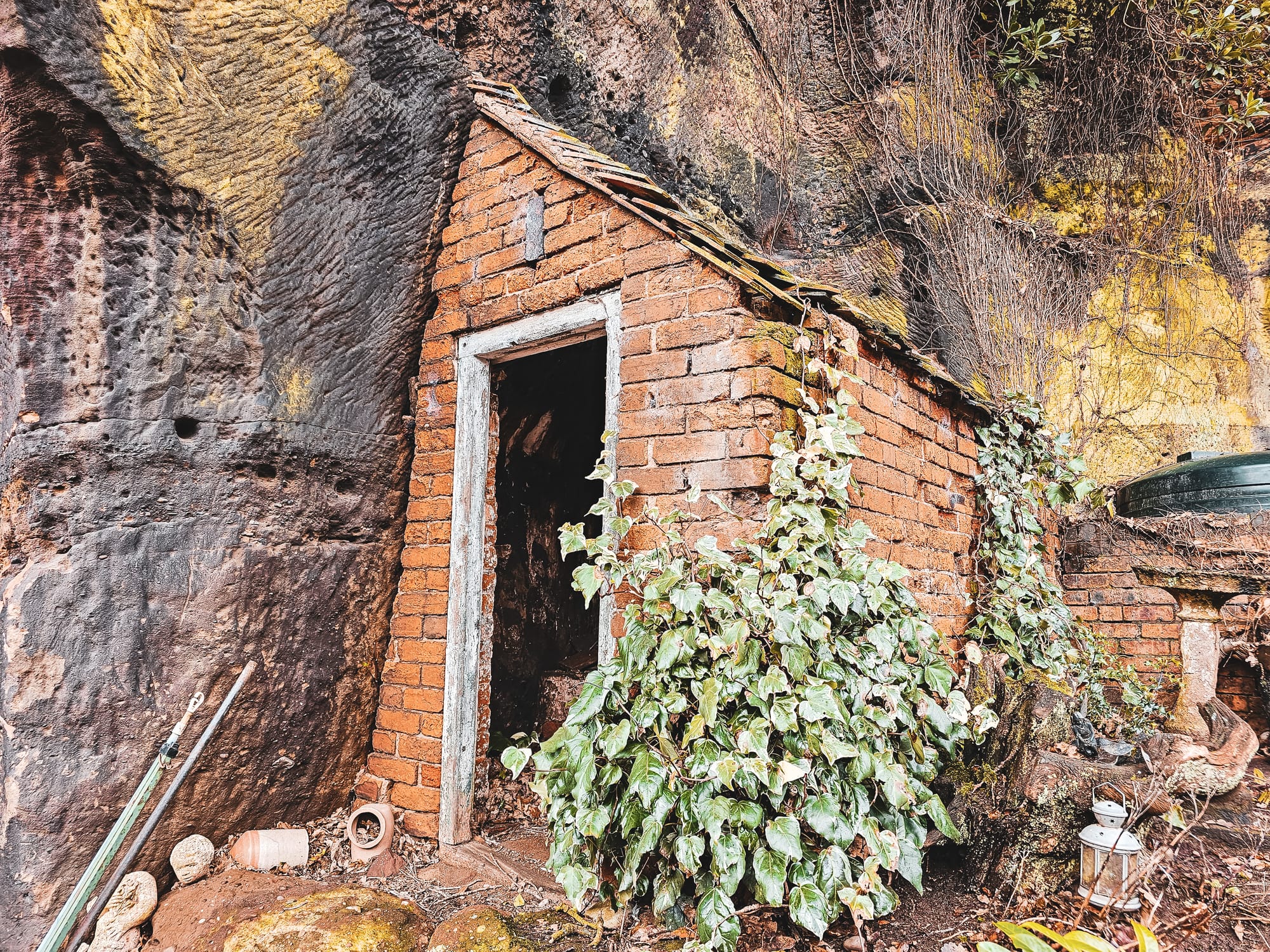
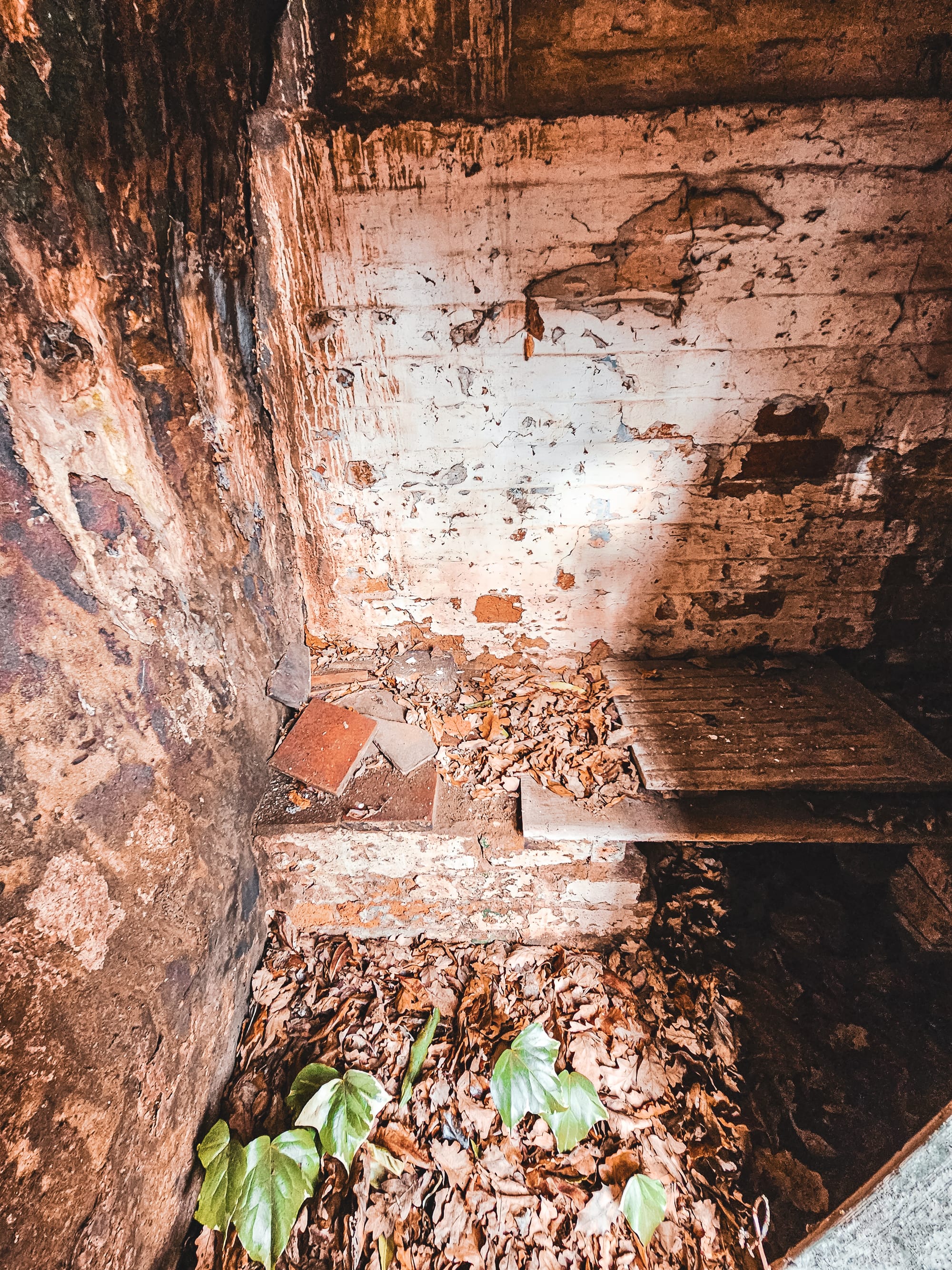
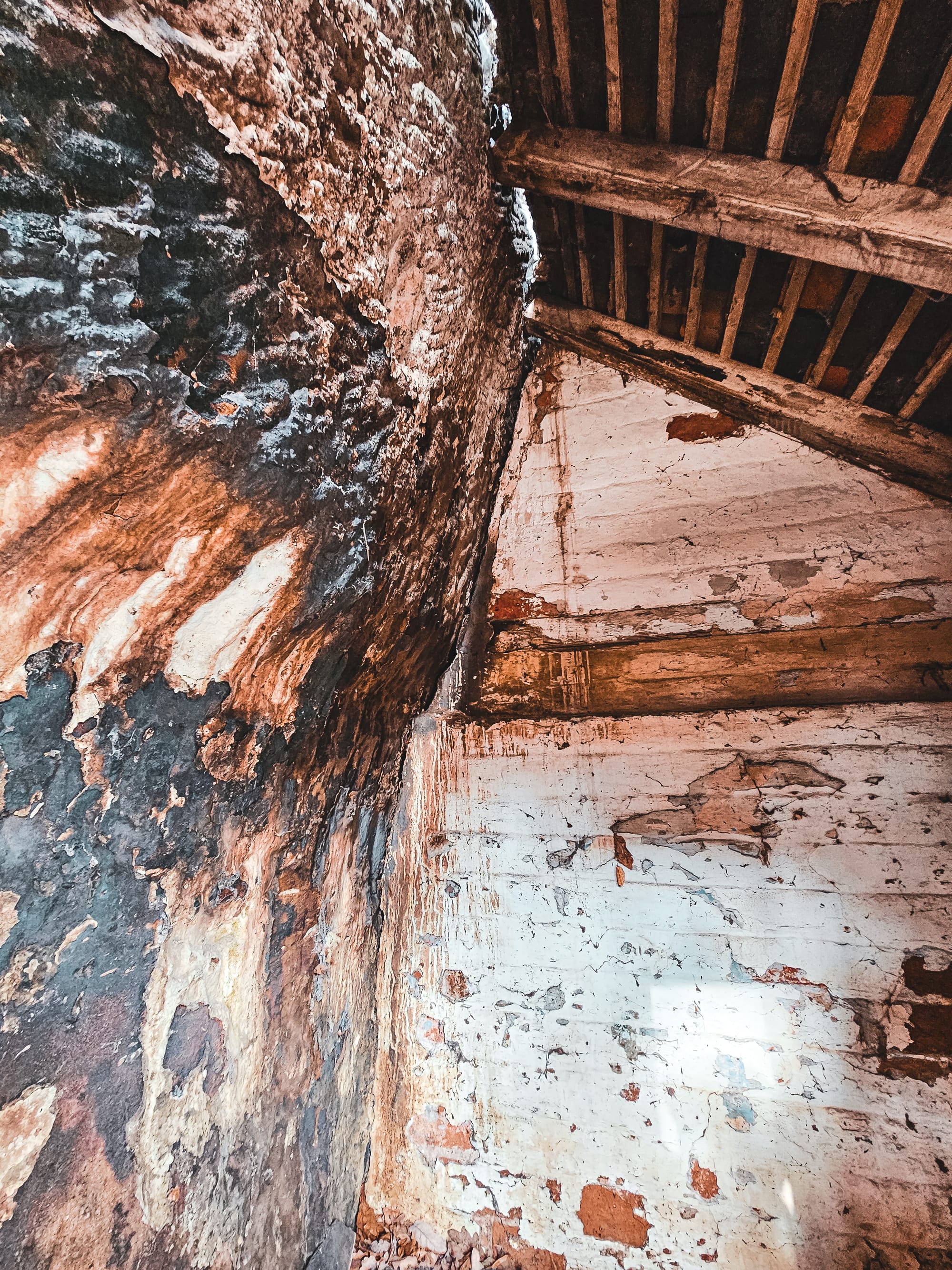
The old toilet and pigsty
Visible traces of the past remain etched into the rock face; the outlines of the cottages' gable ends and a room carved into the rock for storage speak to the area's quarrying history. Marks from the wooden scaffolds used by quarrymen to access higher sections of the rock for cutting can still be seen, illustrating the manual effort involved in stone extraction.
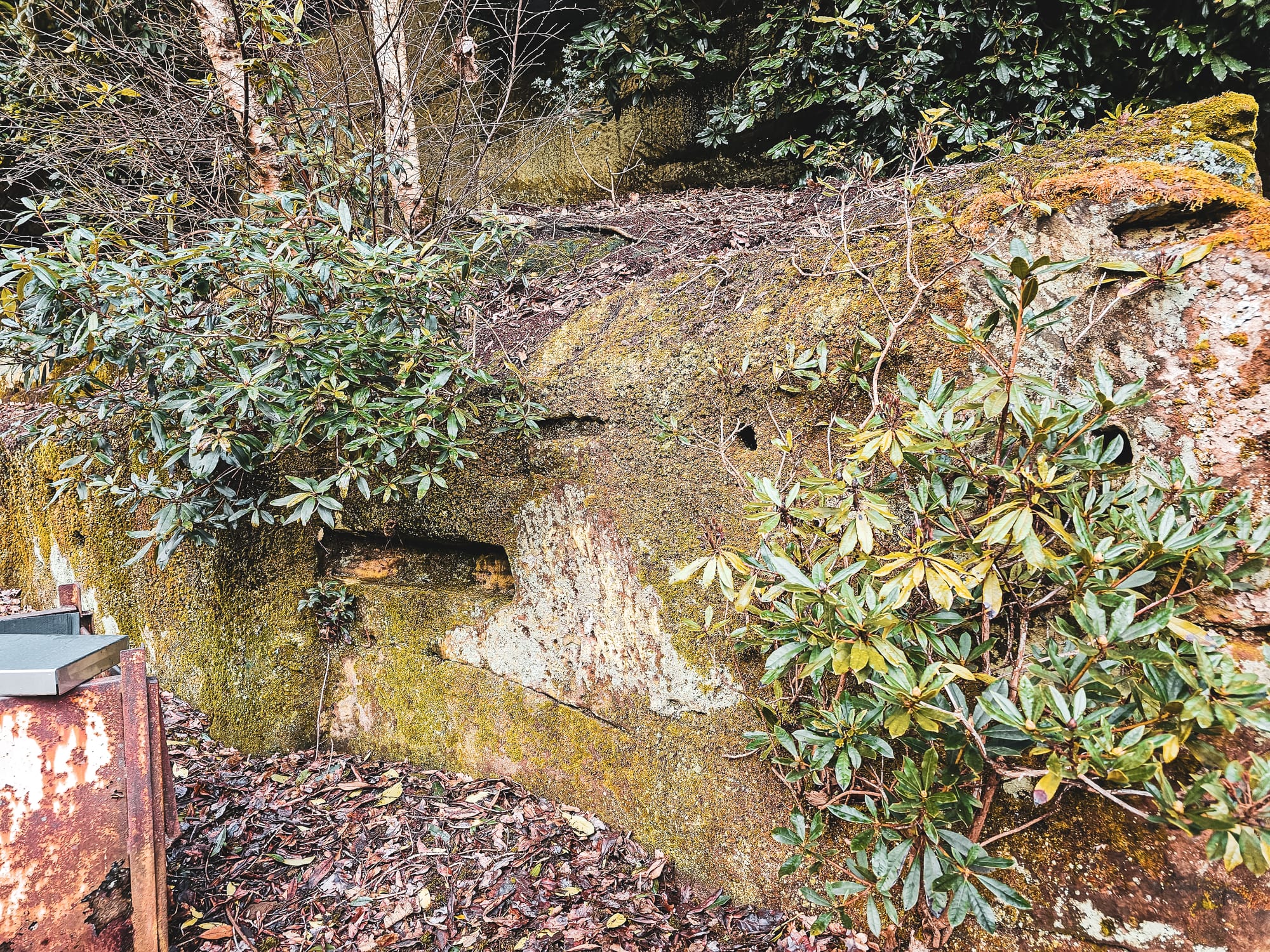
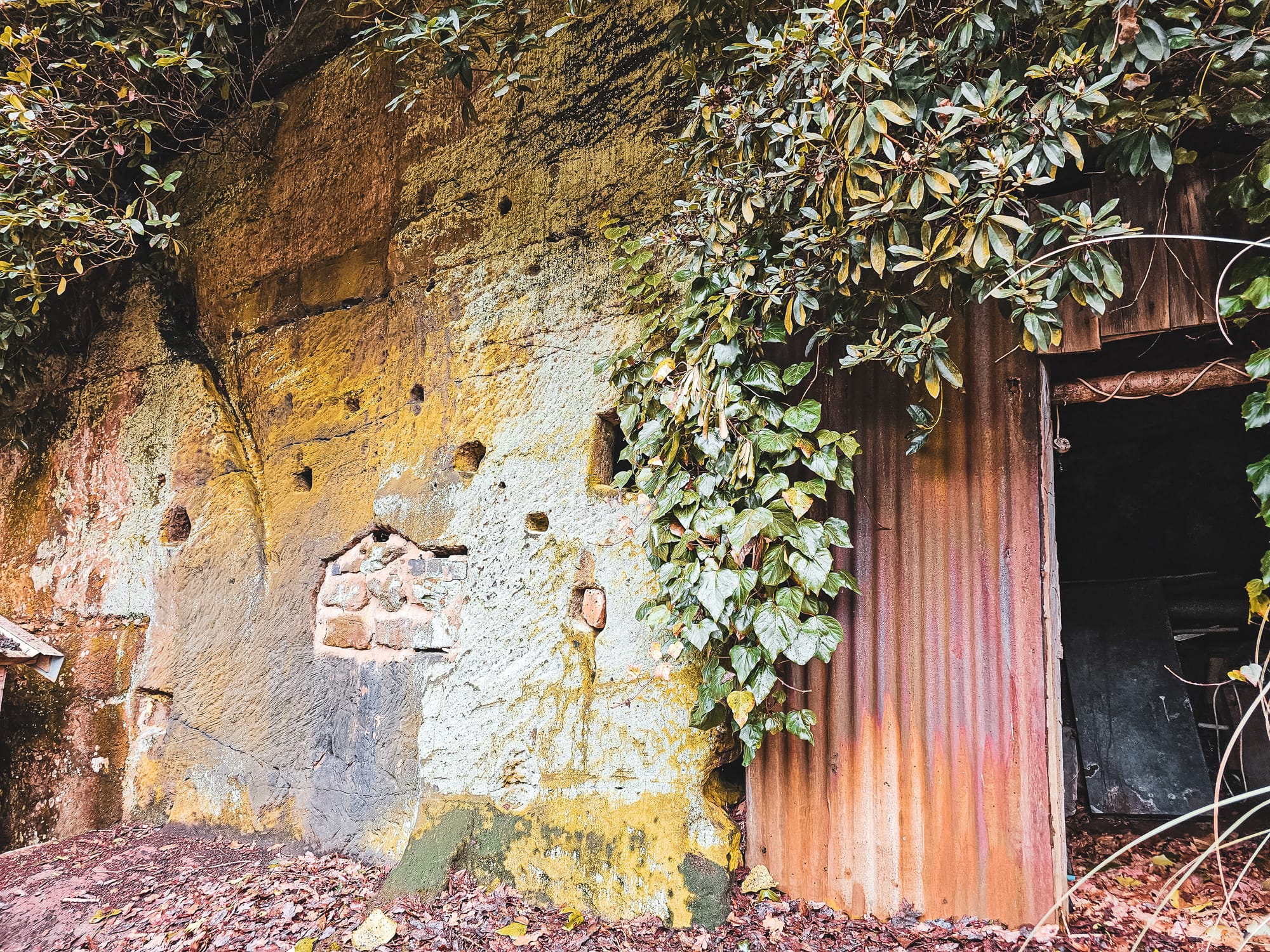
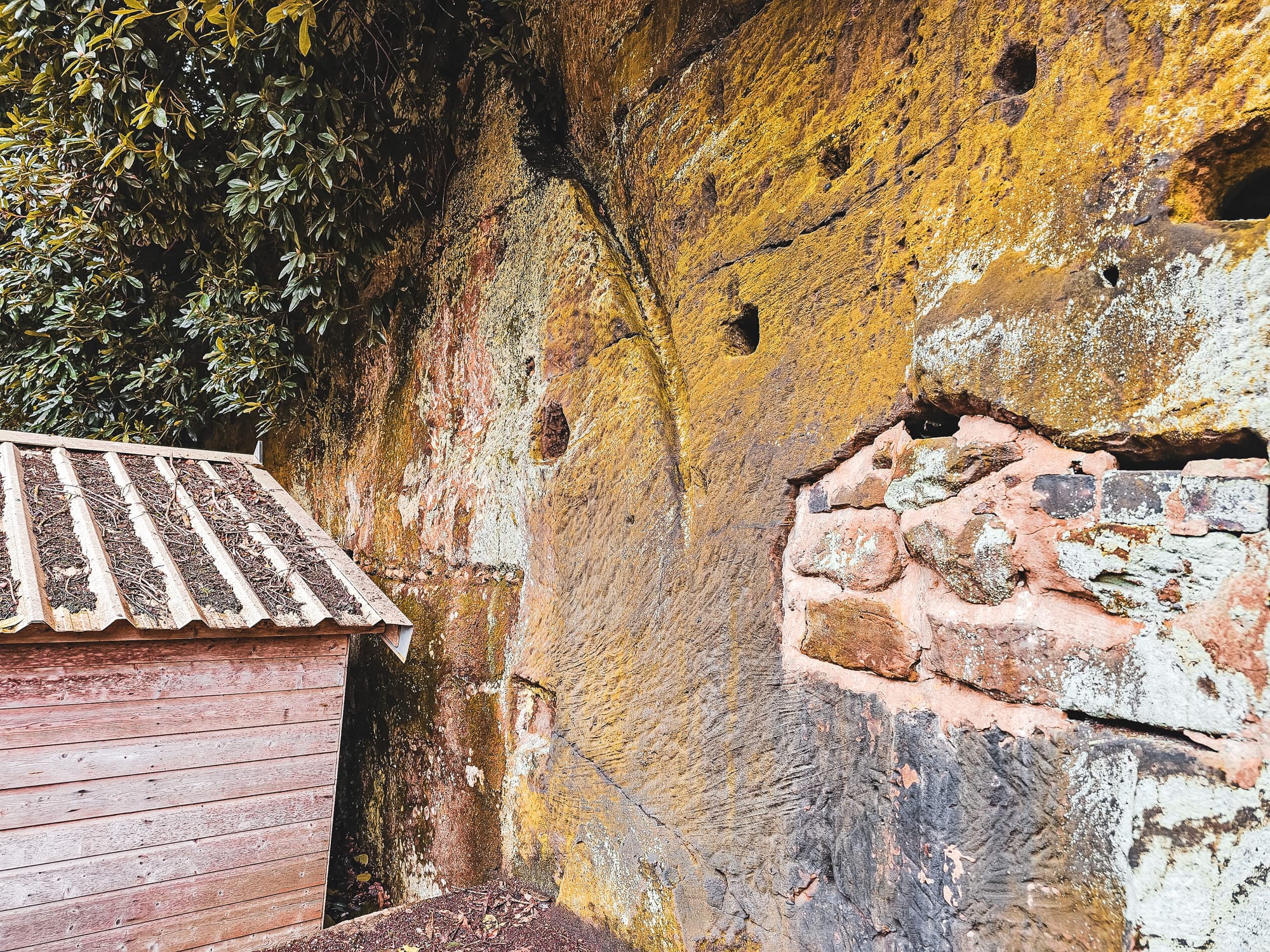
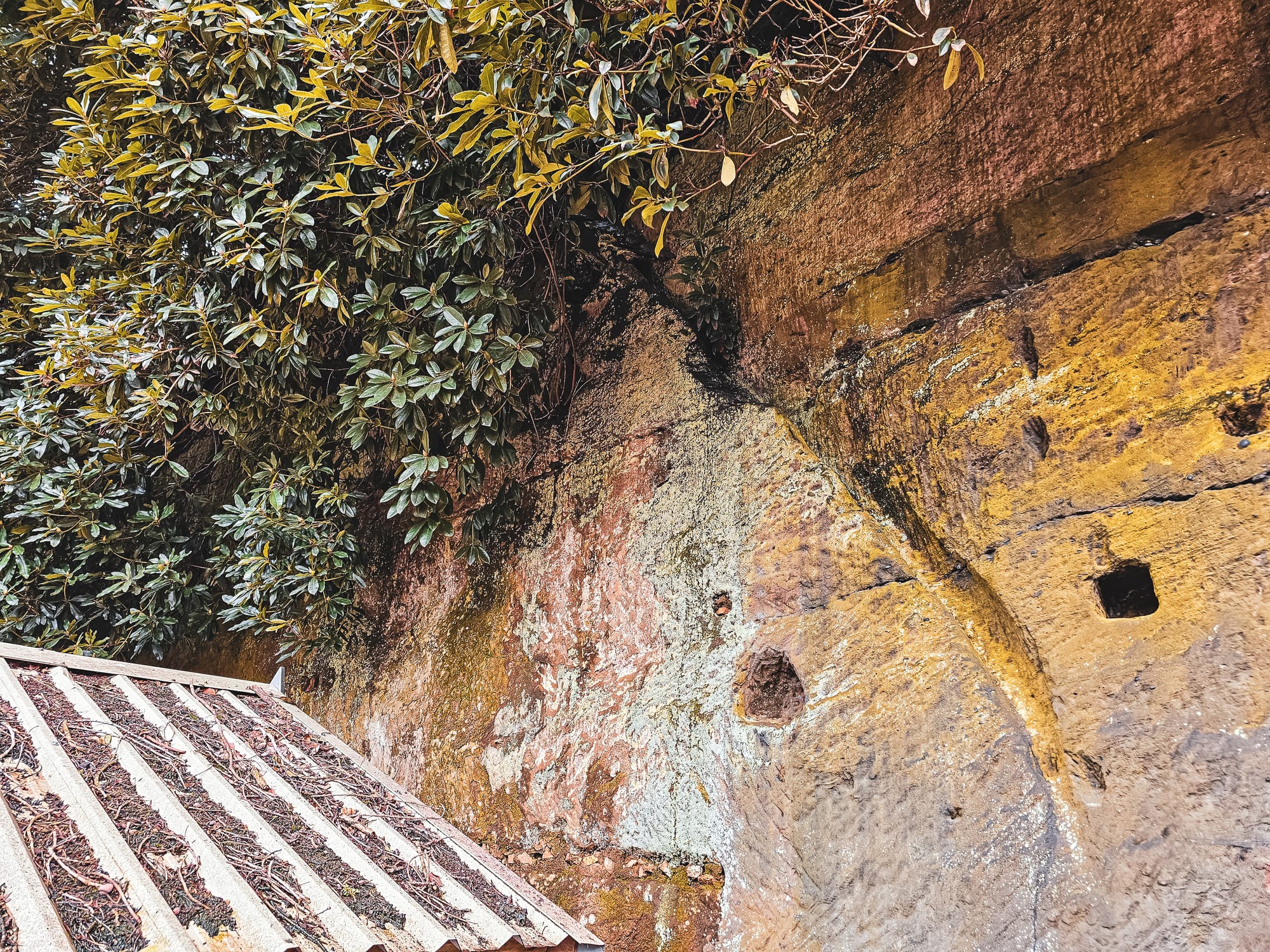
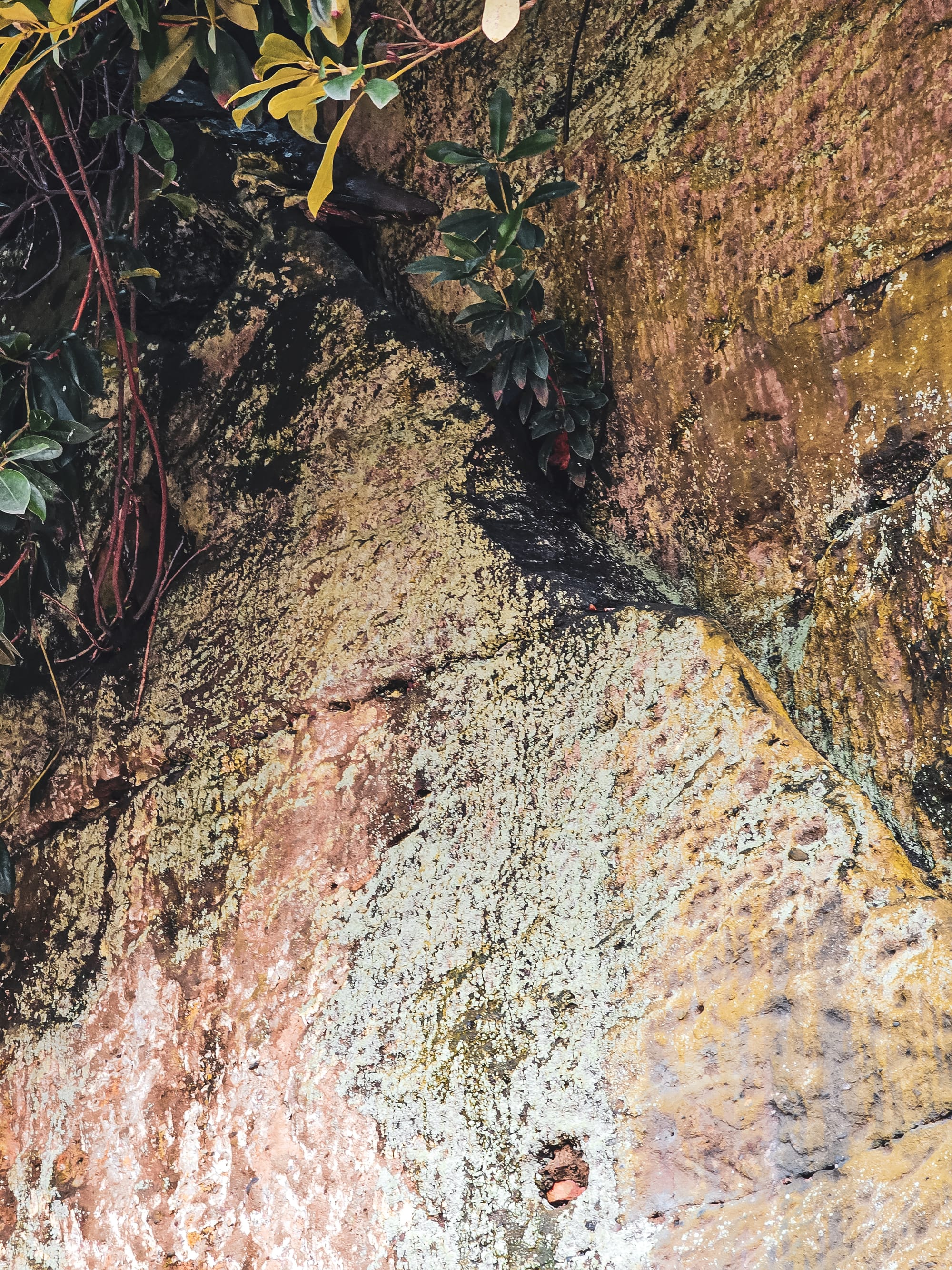
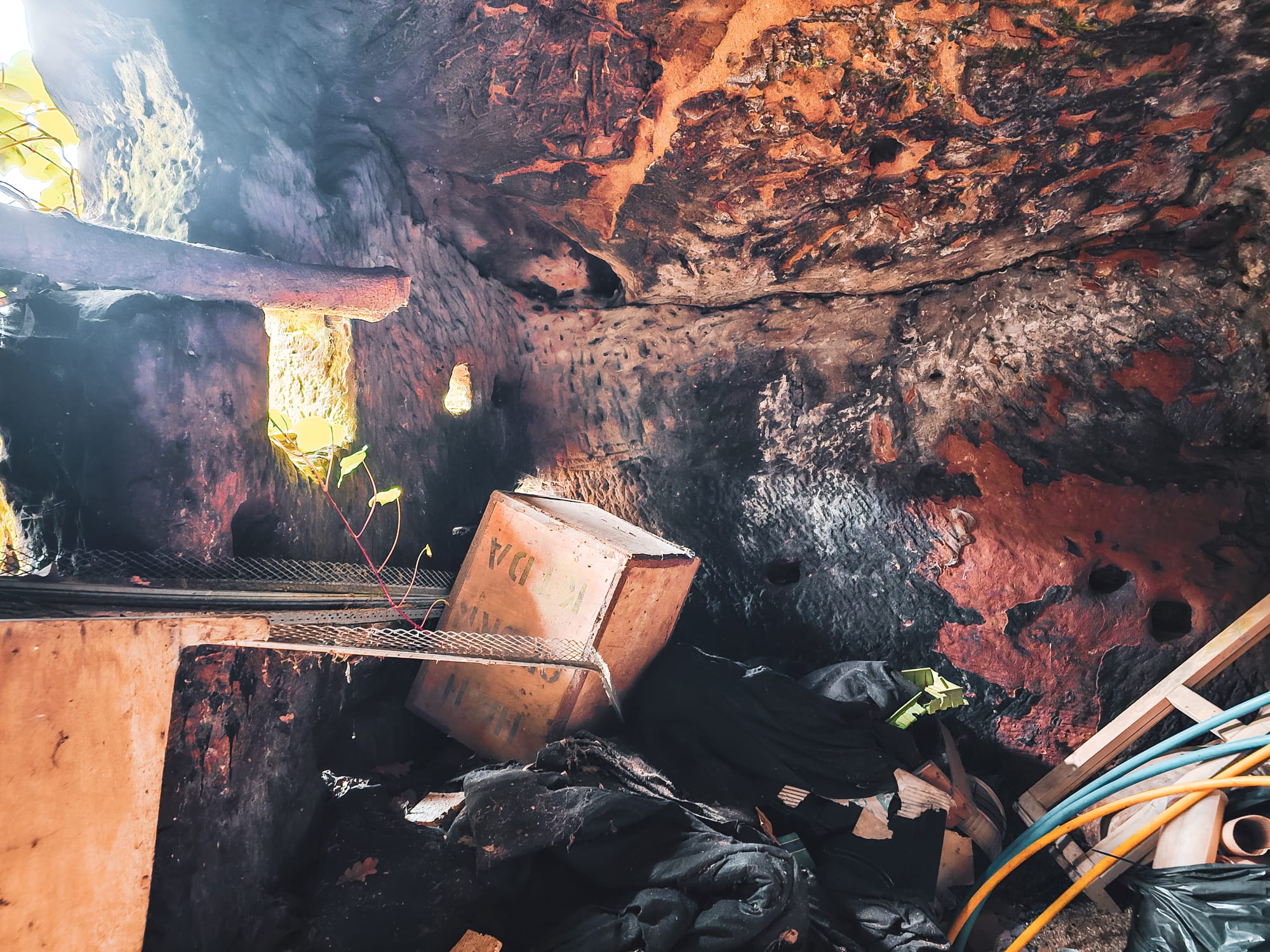
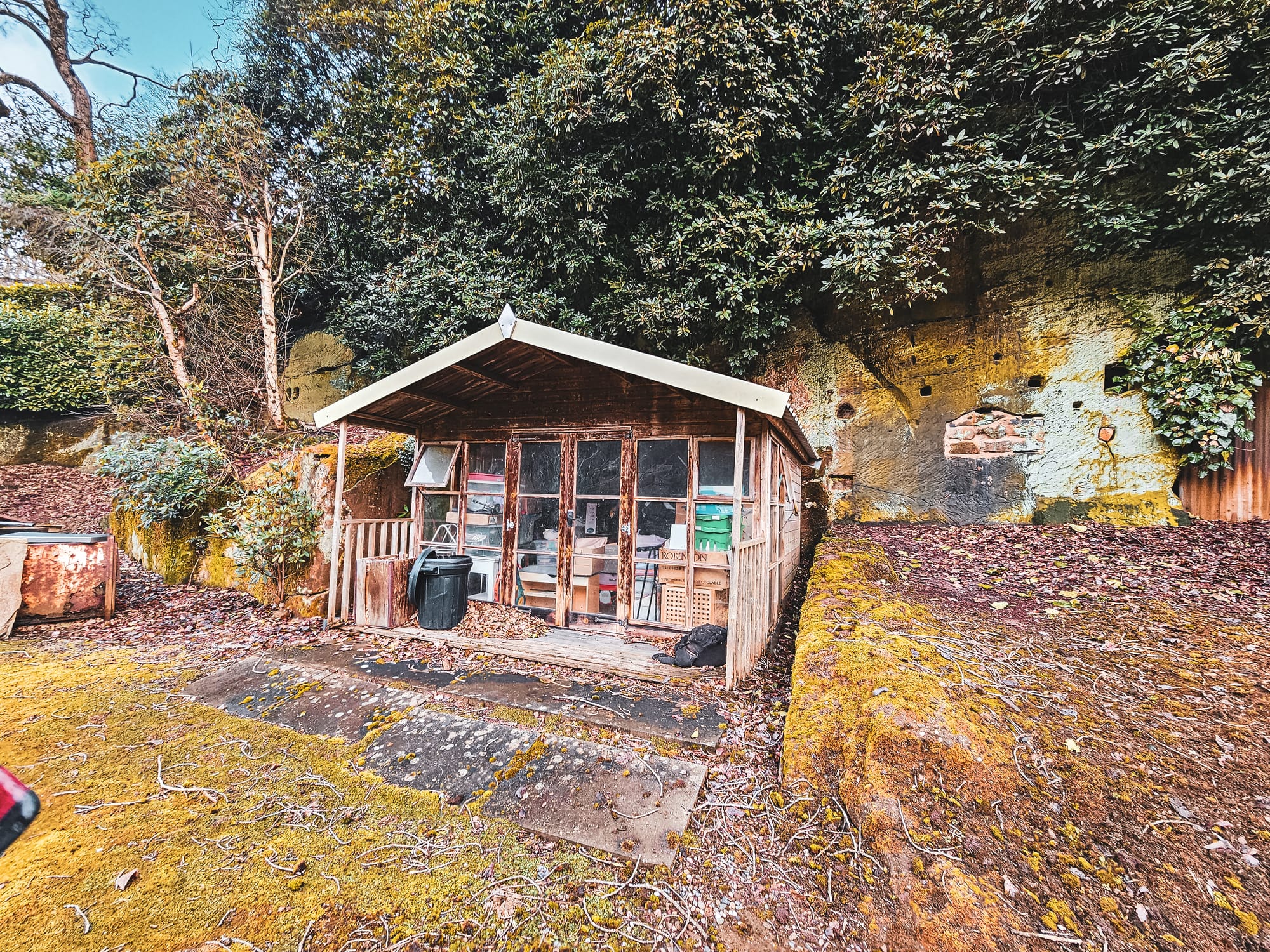
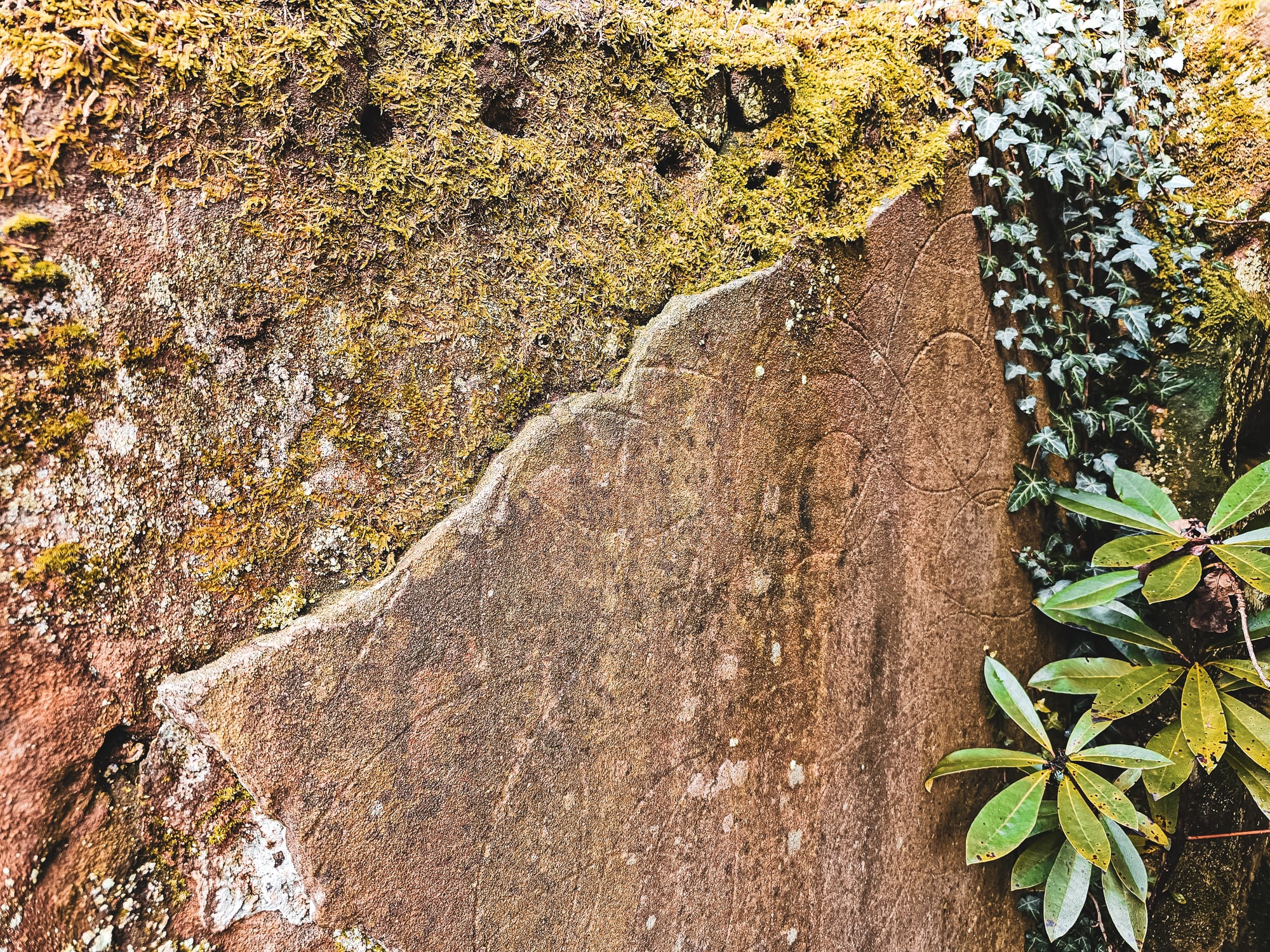
The remnants of the cottage in the rock
In a tribute to this history, Tony has constructed a folly on their property, a symbolic recreation of one of the original quarry workers' cottages. This folly stands as a monument to the land's past, commemorating its years as a site of labour and life for those who worked in the quarry. Through the Greens' efforts, the legacy of the quarry and its workers continues to be honoured and remembered, bridging the gap between Beech's industrial heritage and its present-day community.
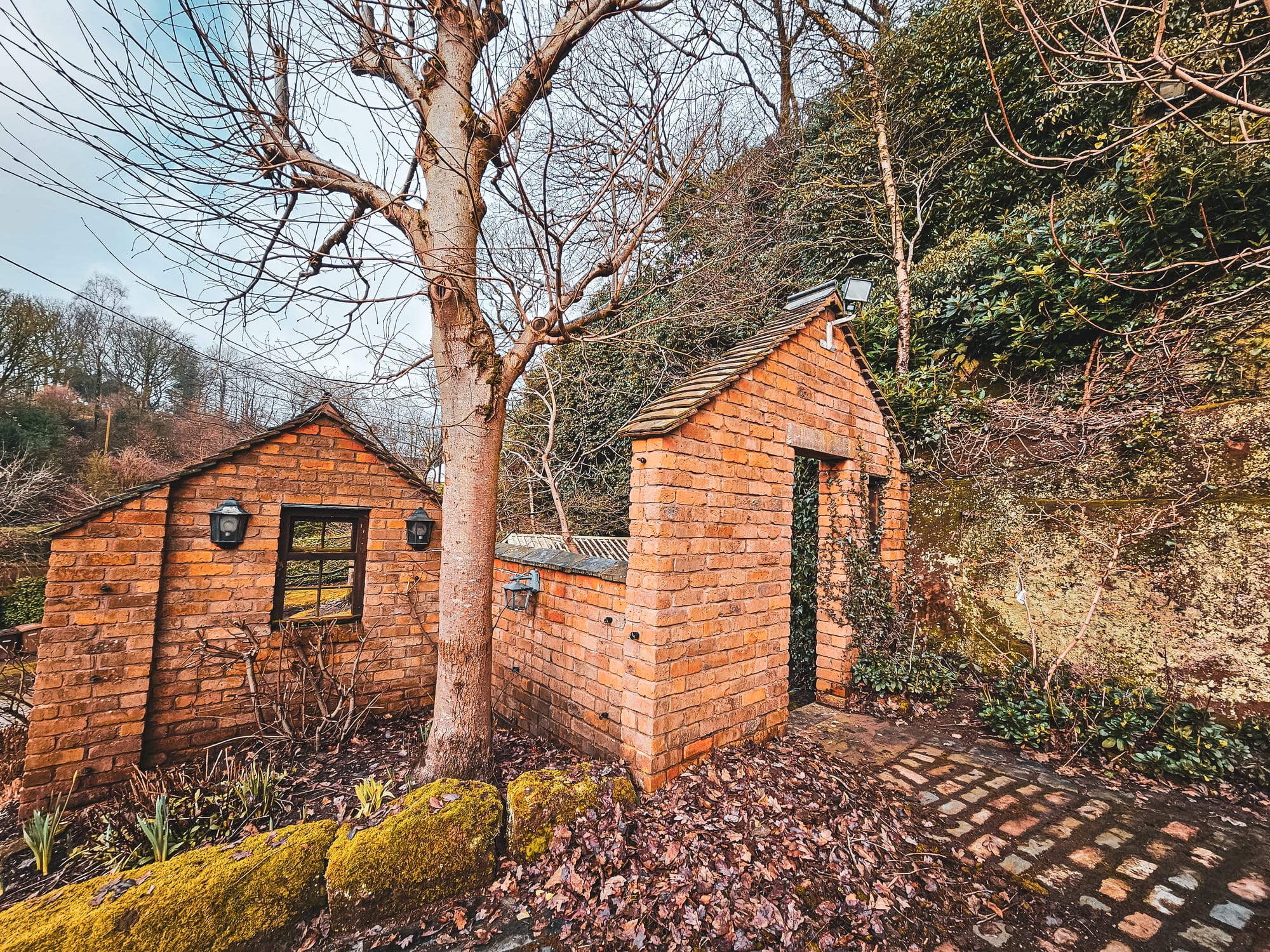
Mrs Green also has contributed significantly to the preservation of the history of the local area. She and her neighbours fought to get the bridge that carries the A519 in Beech listed, as it was at risk of being lost to another potential quarry being dug. They won their fight and the bridge was listed on the 3rd of November 1992. The bridge is made out of red sandstone, so it is probably safe to say that it was made out of the stone quarried right there in Beech, making it even more important.

From the 1980s to the early 2000s, Beech Caves were a popular spot for underground rave parties. The caves, with their secluded location and expansive interiors, became an ideal spot for the burgeoning rave scene, attracting groups looking for unique, out-of-the-way places to hold events away from the prying eyes of authorities, which often attracted hundreds of people. However, the raves also brought problems, such as noise complaints, littering, and damage to the caves.
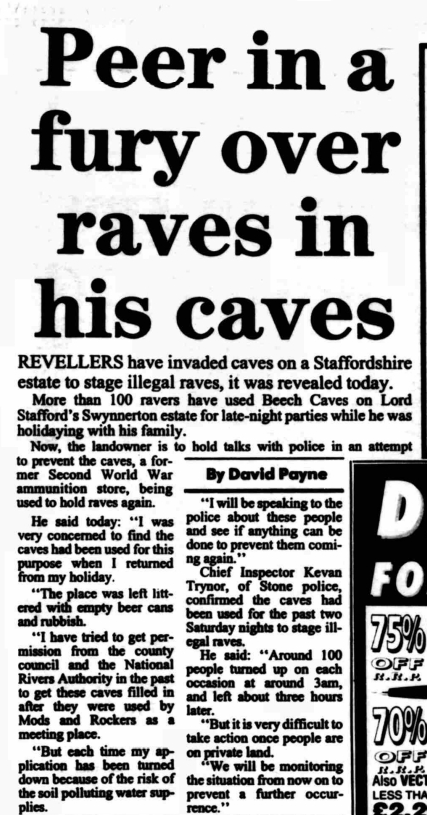

Sentinel articles about the raves in the 90s
In recent years, the Beech Caves have come under scrutiny due to contemporary concerns, particularly regarding health and safety. Spanning an area of approximately 2800 square meters, the caves have attracted attention not only for their historical and cultural significance but also for the potential risks they pose to visitors. This has led to speculation that local authorities might consider sealing off the caves to the public as a preventive measure.
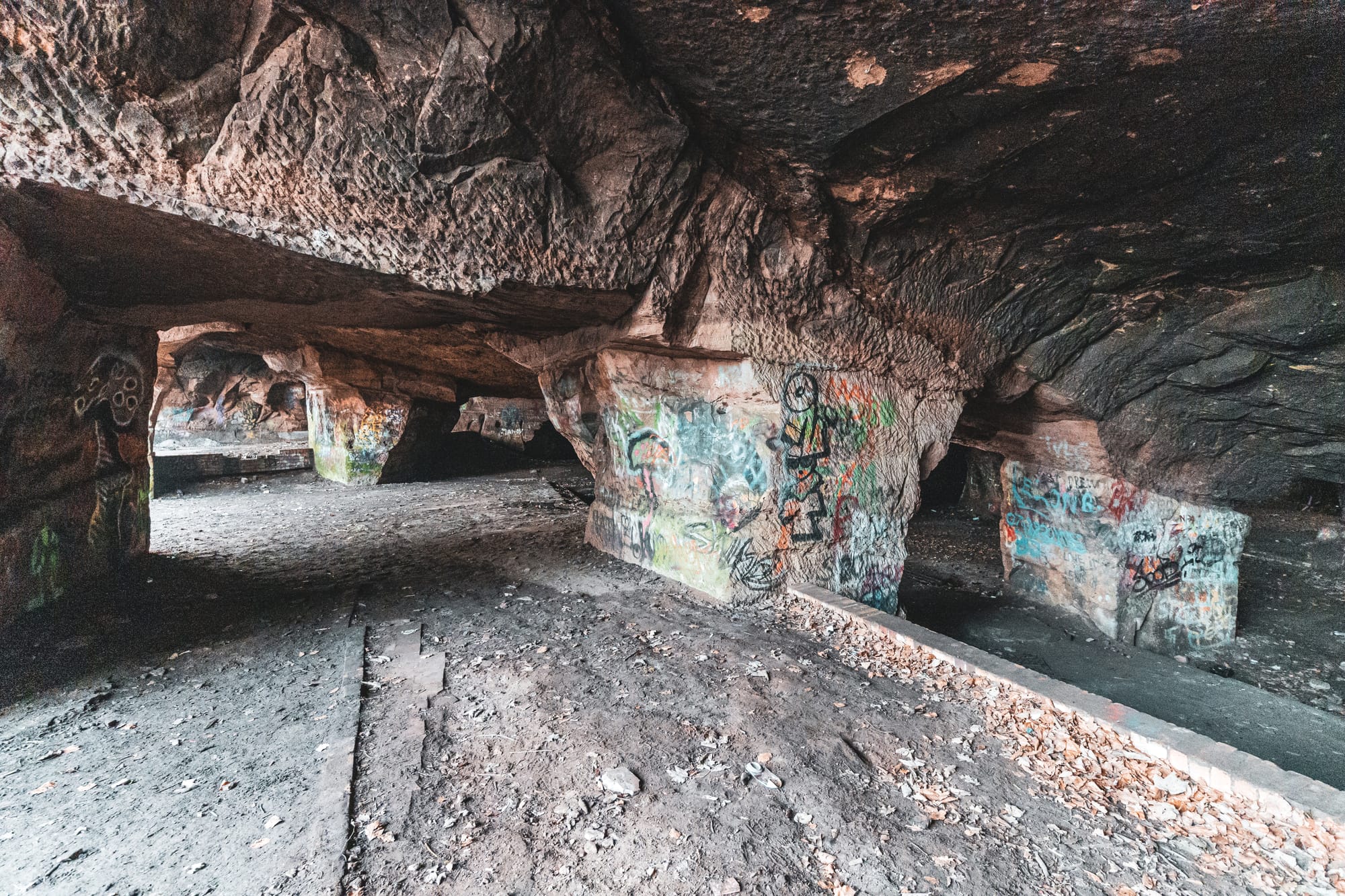
The consideration to restrict access to the Beech Caves stems from a growing awareness of the challenges and liabilities associated with maintaining public safety in such environments. Natural caves can present numerous hazards, including unstable structures, slippery surfaces, and the risk of falls or collapses. Additionally, the caves' historical use and their transformation into a site for unofficial gatherings, such as raves, may have compounded concerns over liability, emergency access, and the preservation of the site's integrity.
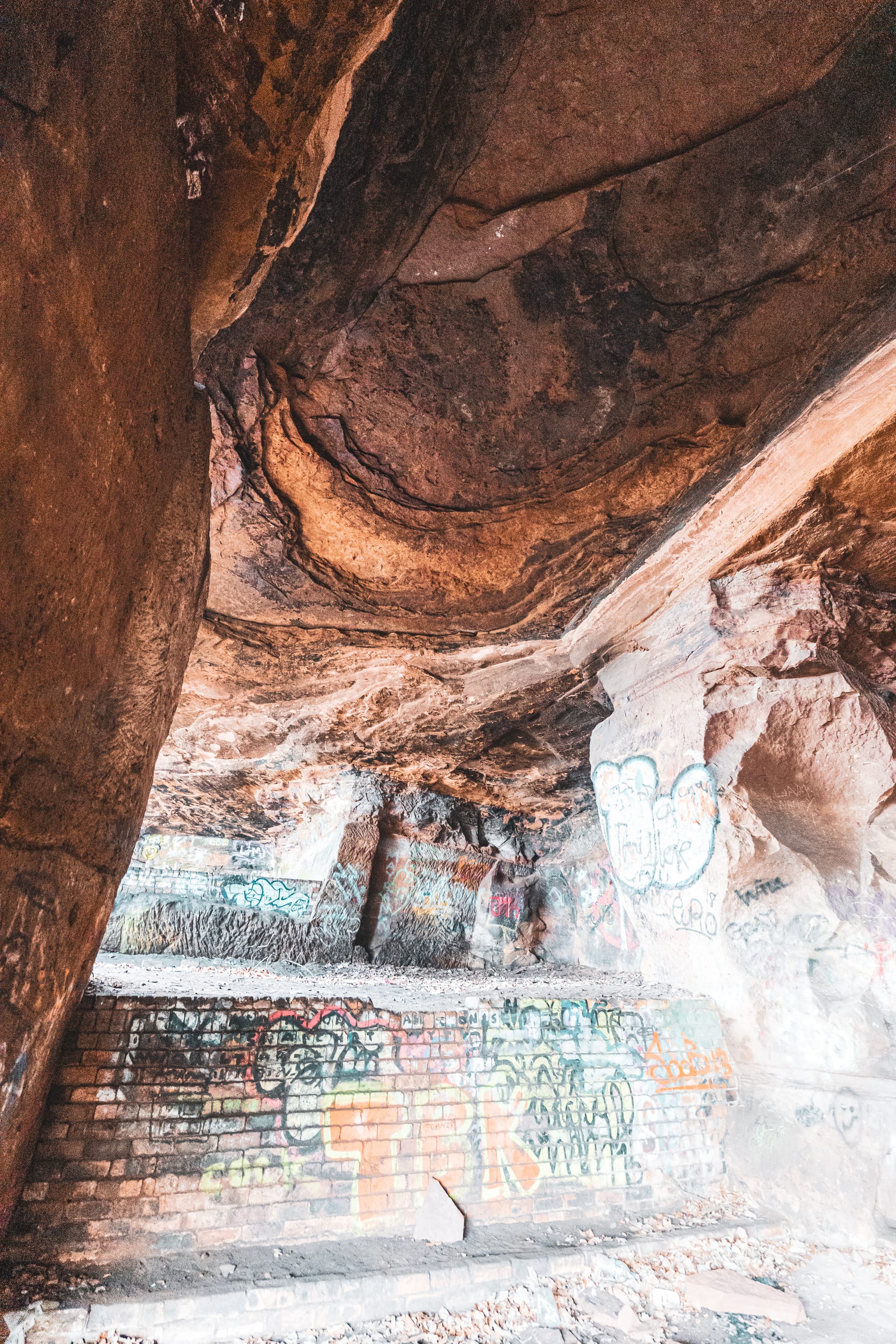
The potential closure of the caves to public access raises important questions about the balance between preserving cultural heritage and ensuring public safety. While sealing off the caves could protect individuals from harm and the site from further degradation, it would also limit public engagement with a significant local landmark. This dilemma reflects broader debates in heritage conservation and access, highlighting the challenges of managing and preserving historical sites in ways that respect their cultural value and contemporary safety standards.
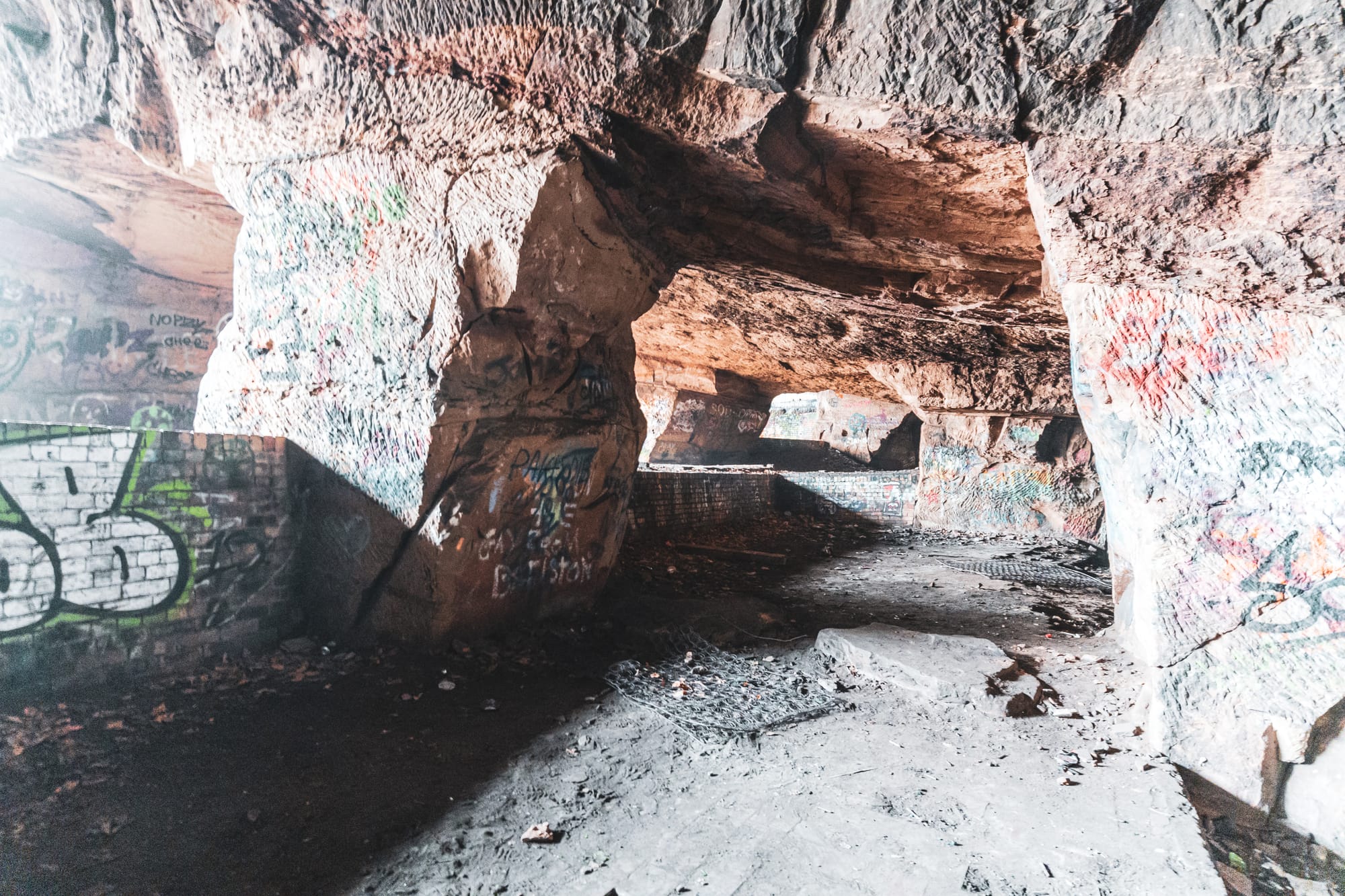
As discussions about the future of Beech Caves continue, they underscore the need for thoughtful consideration of how to best protect both the public and the historical integrity of such sites. Whether through restricted access, guided tours, or other safety measures, the goal remains to ensure that the caves can be both preserved and enjoyed by future generations, albeit in a manner that prioritizes safety and sustainability.

Sign my petition
Thank you for reading!
If you like what you have read, please feel free to support me by following and signing up for my newsletter and/or buying me a coffee!

If you love our local history, don't forget to follow me, check out more of my videos and my website http://www.theredhairedstokie.co.uk
Don't forget to subscribe to my YouTube channel - https://www.youtube.com/channel/UCCA246yaLXVDHSB-MrFMB2A
Check out my recommended reading list
